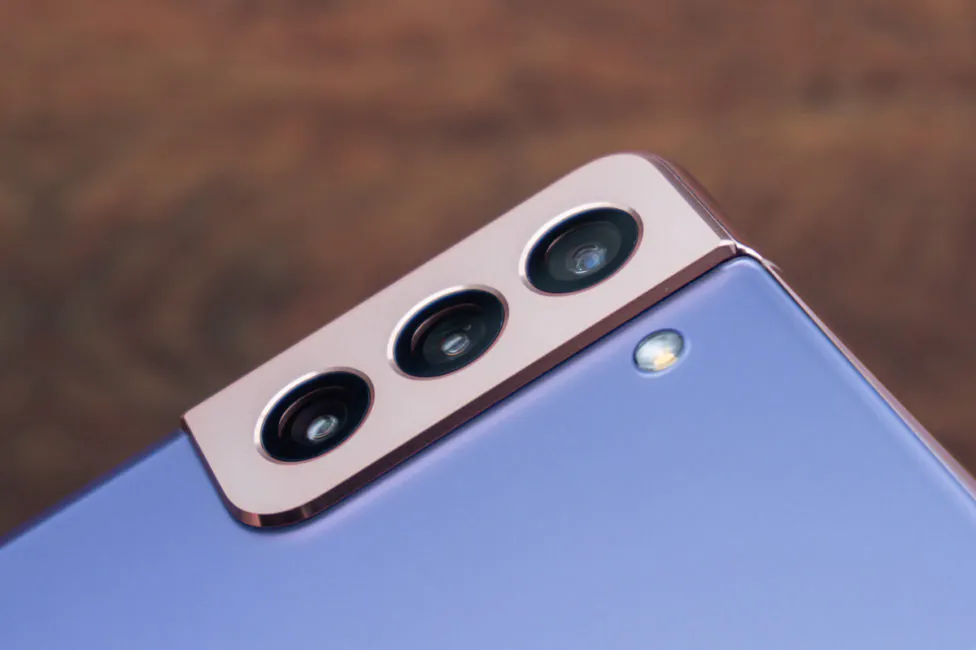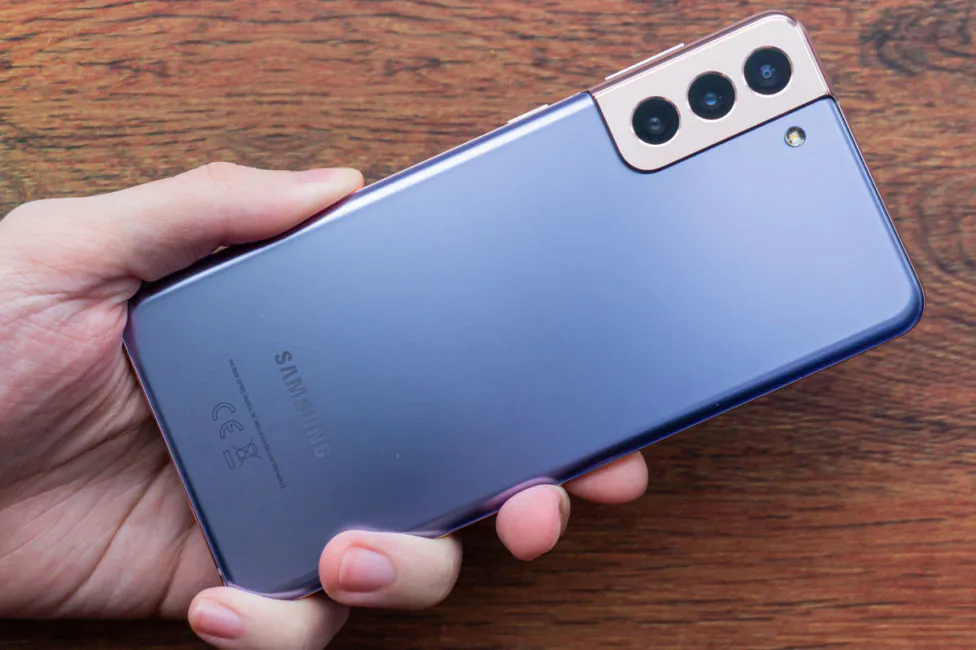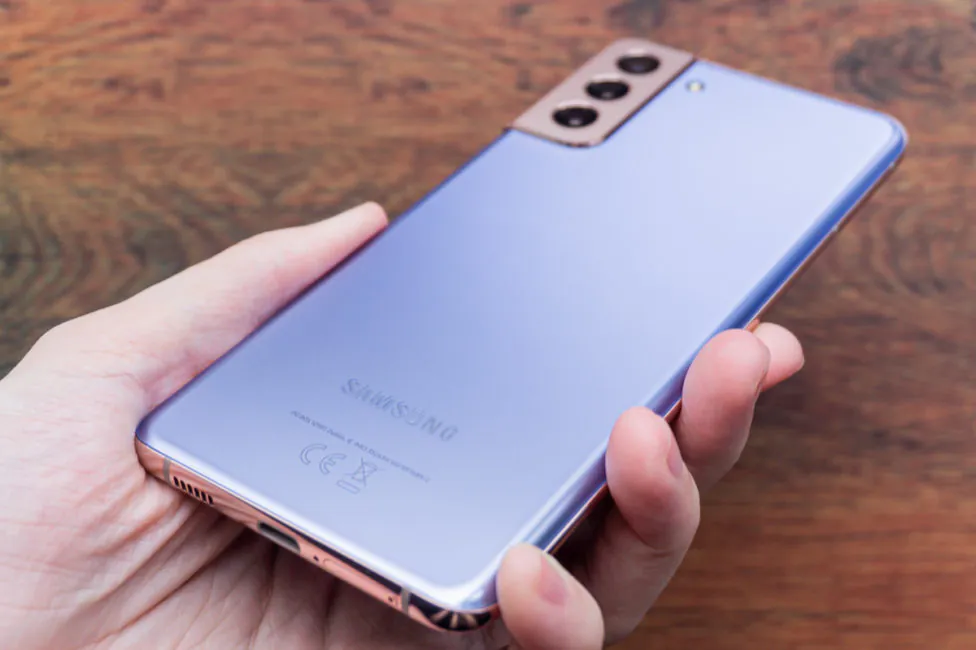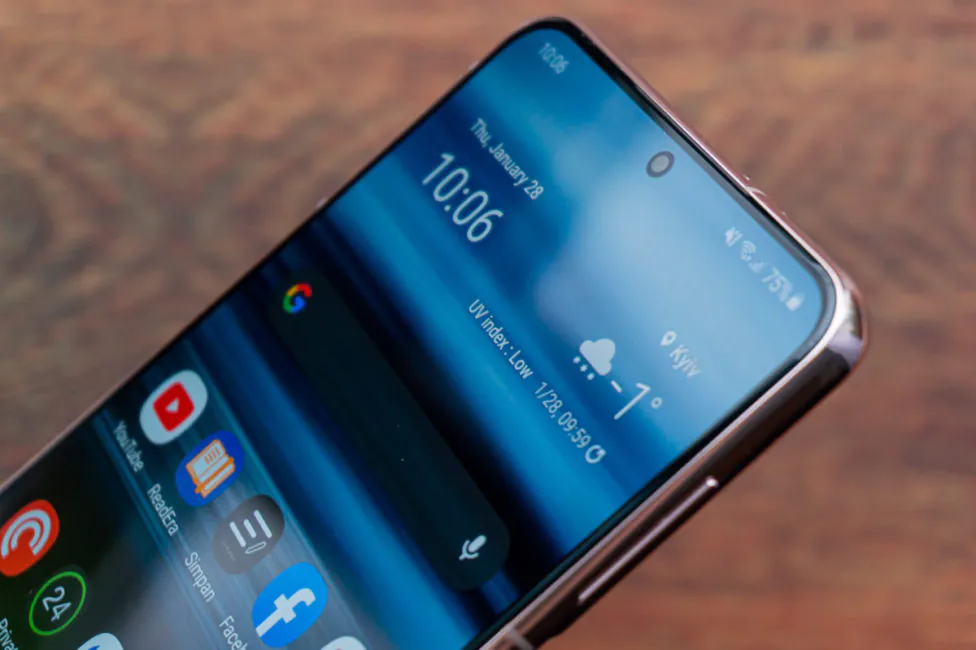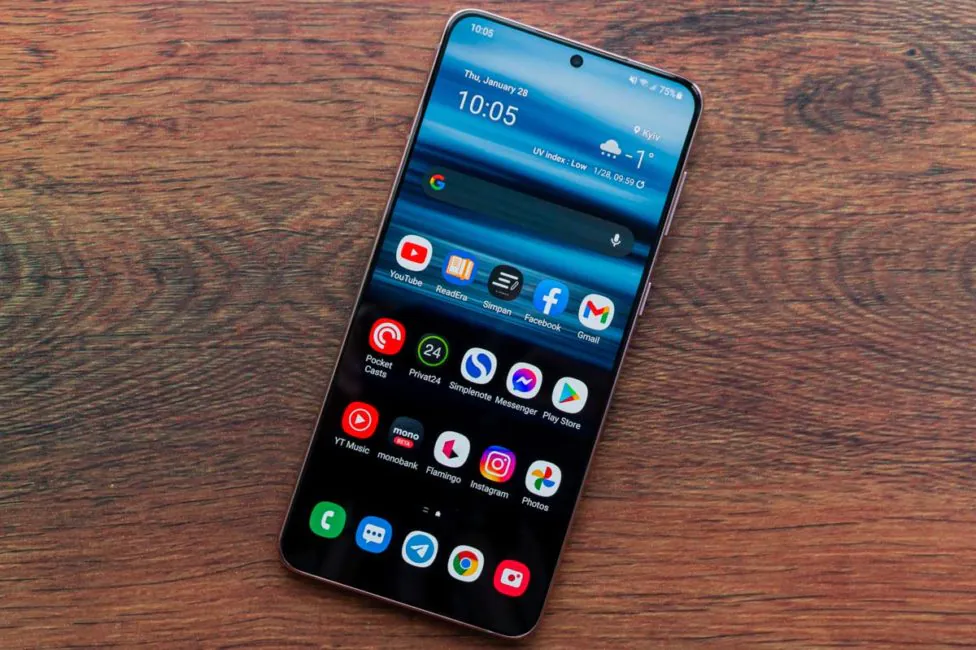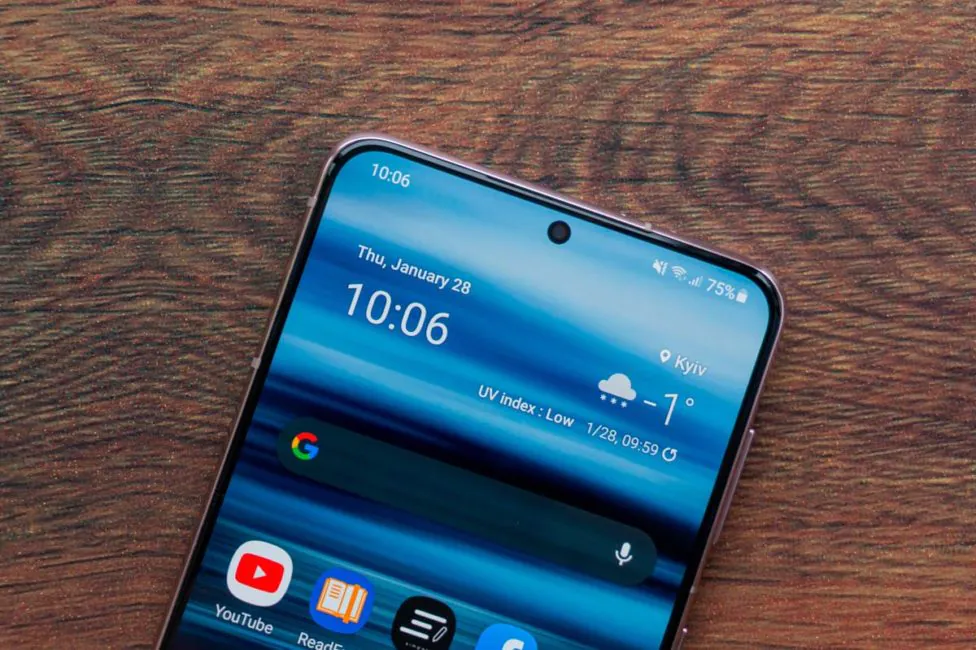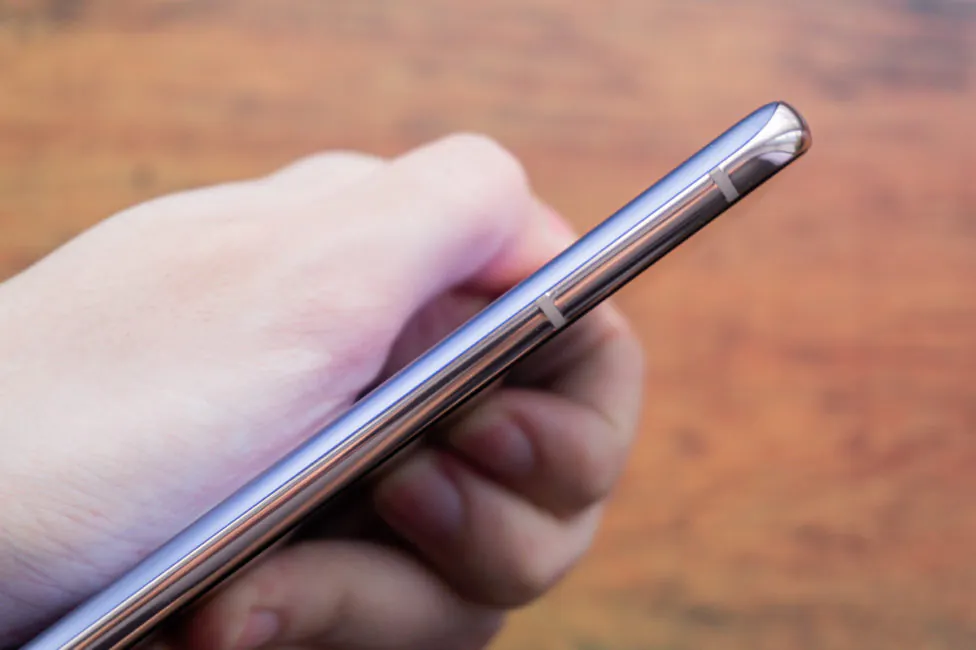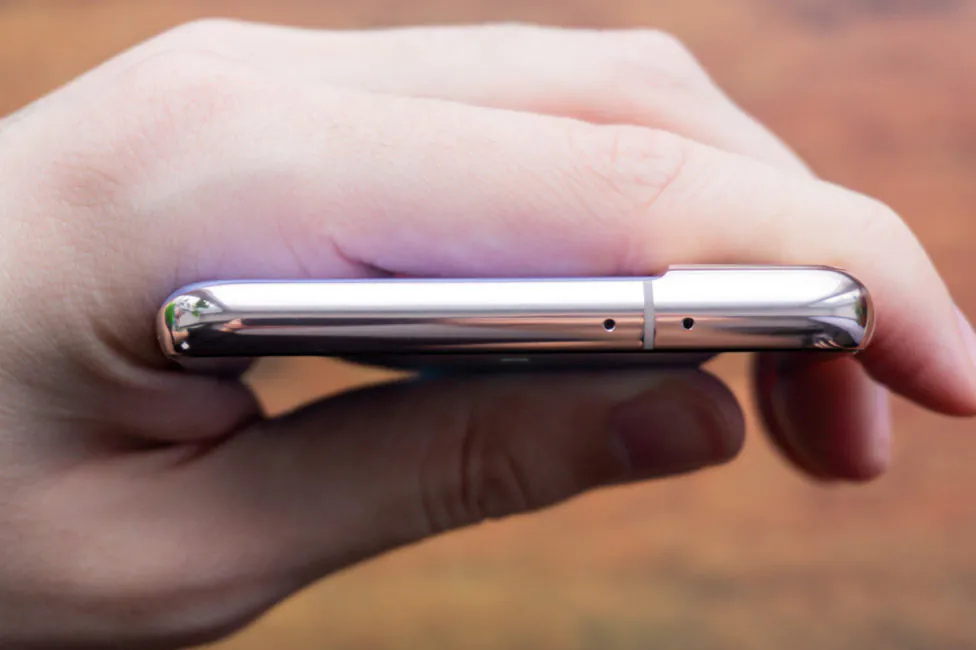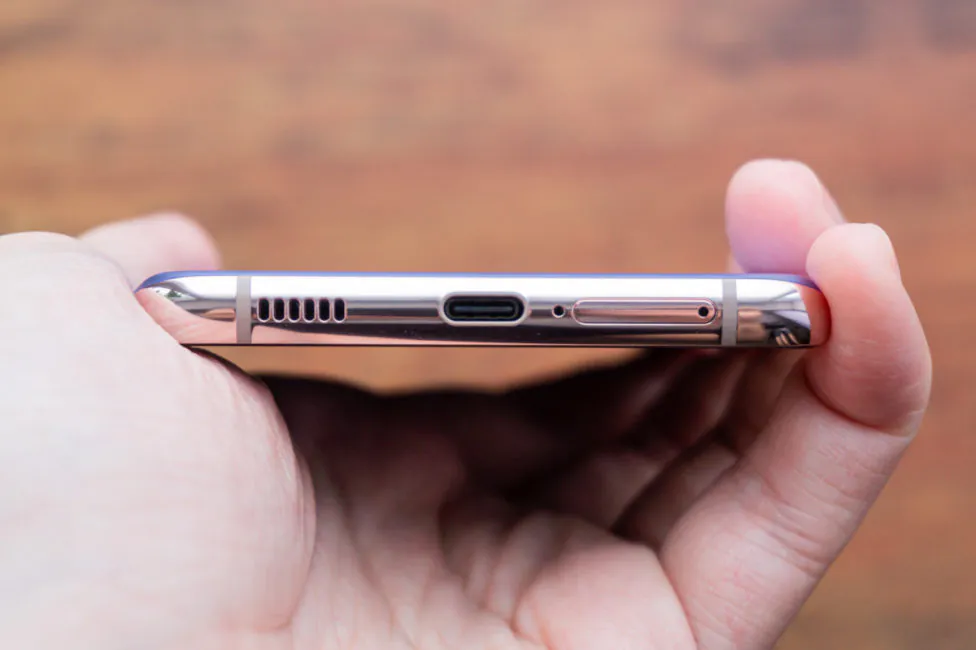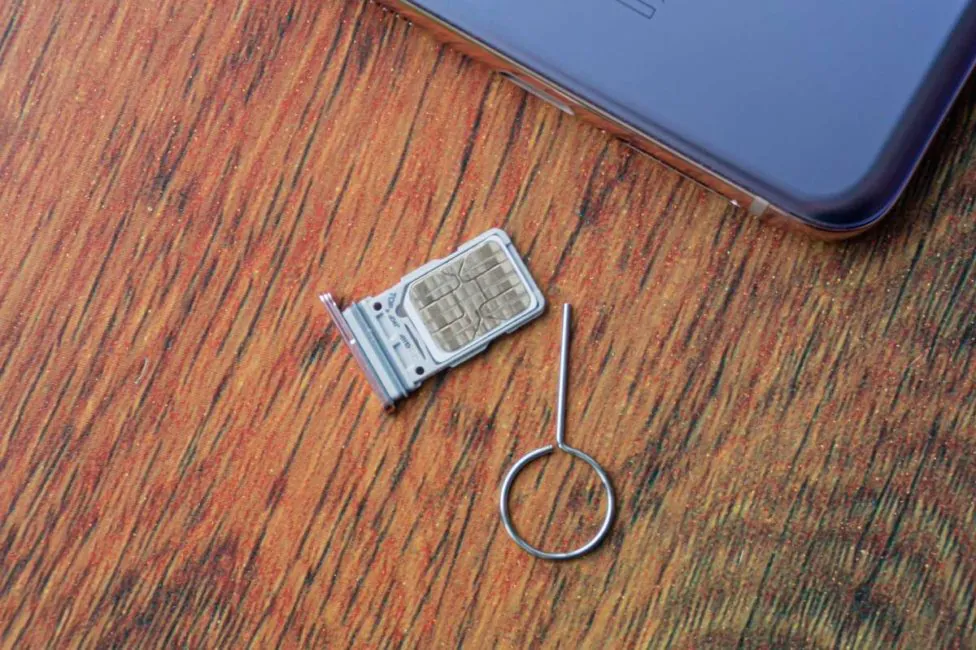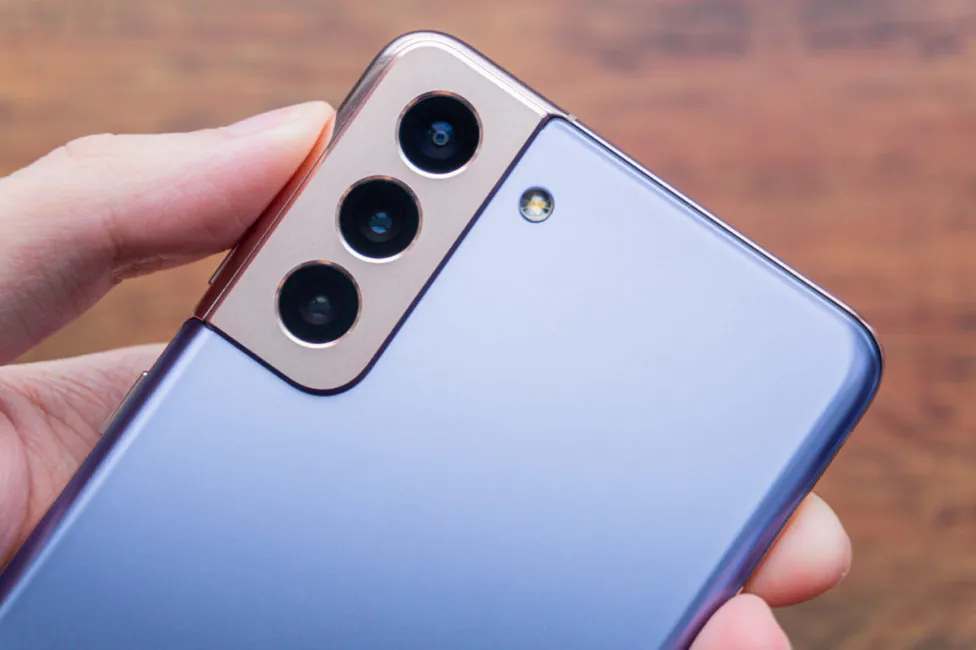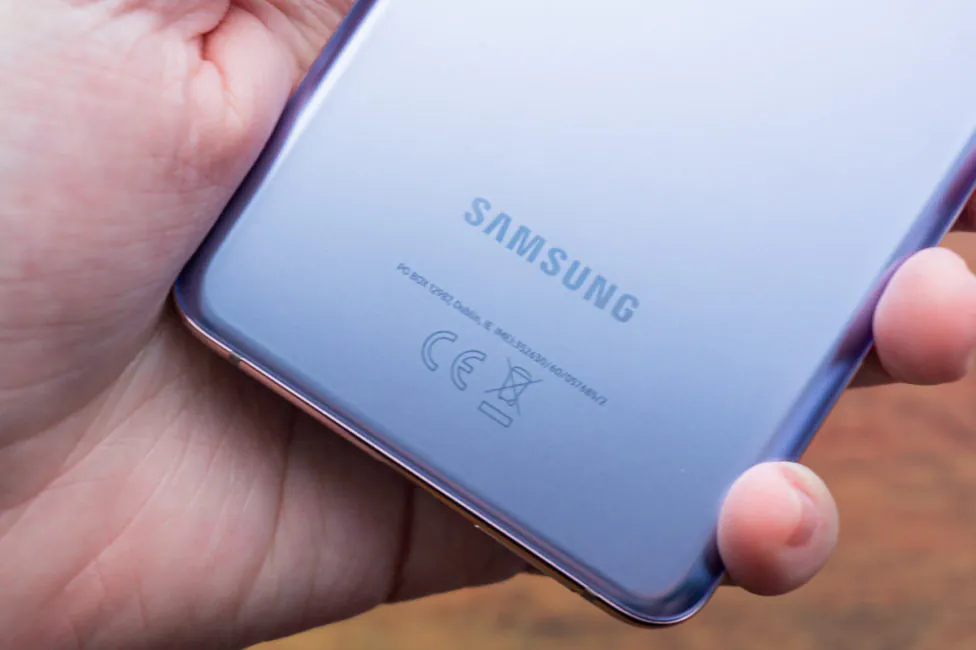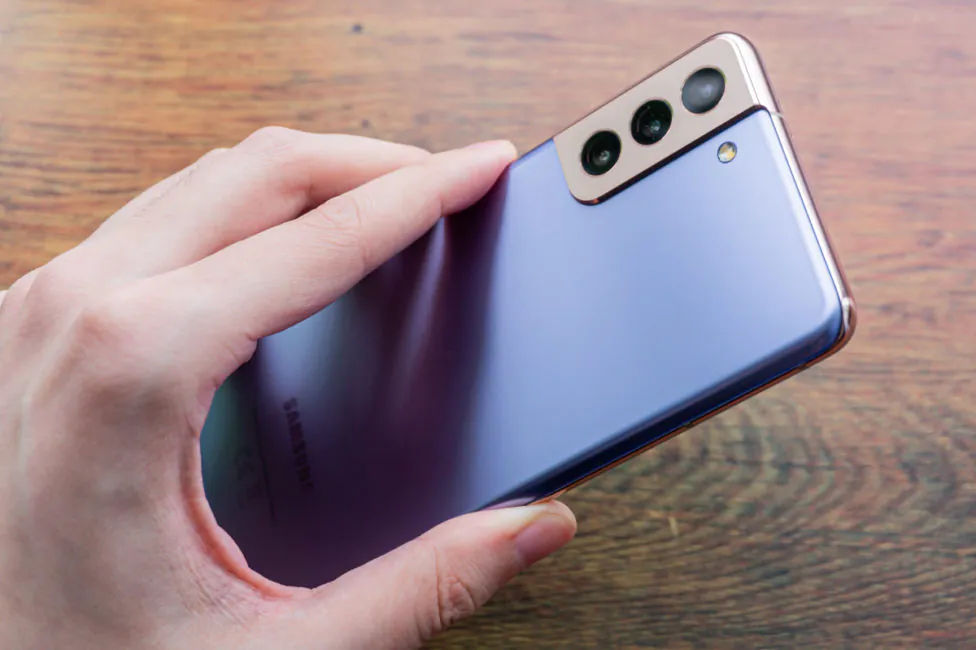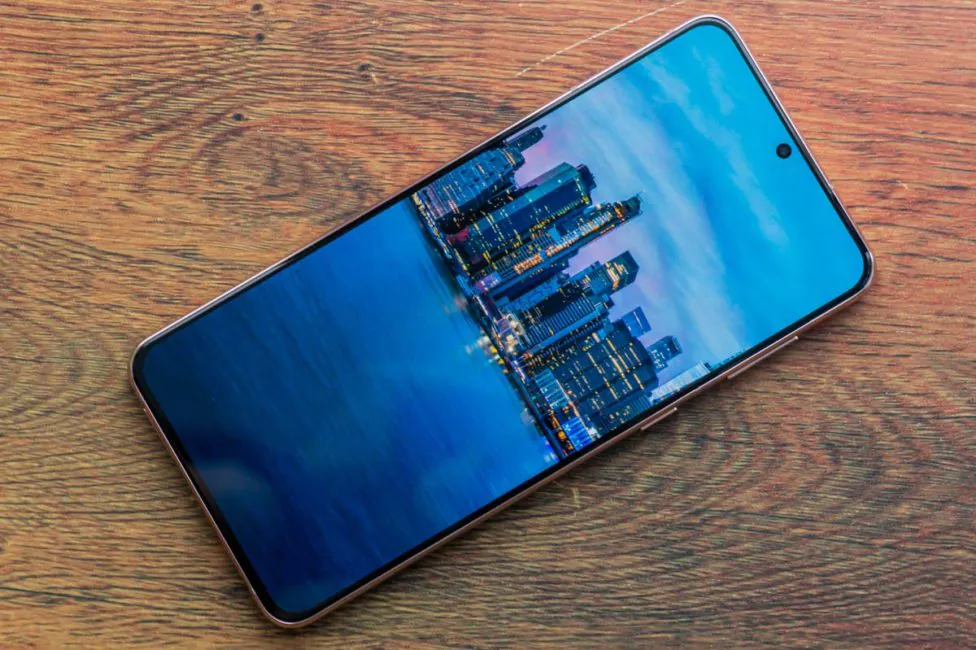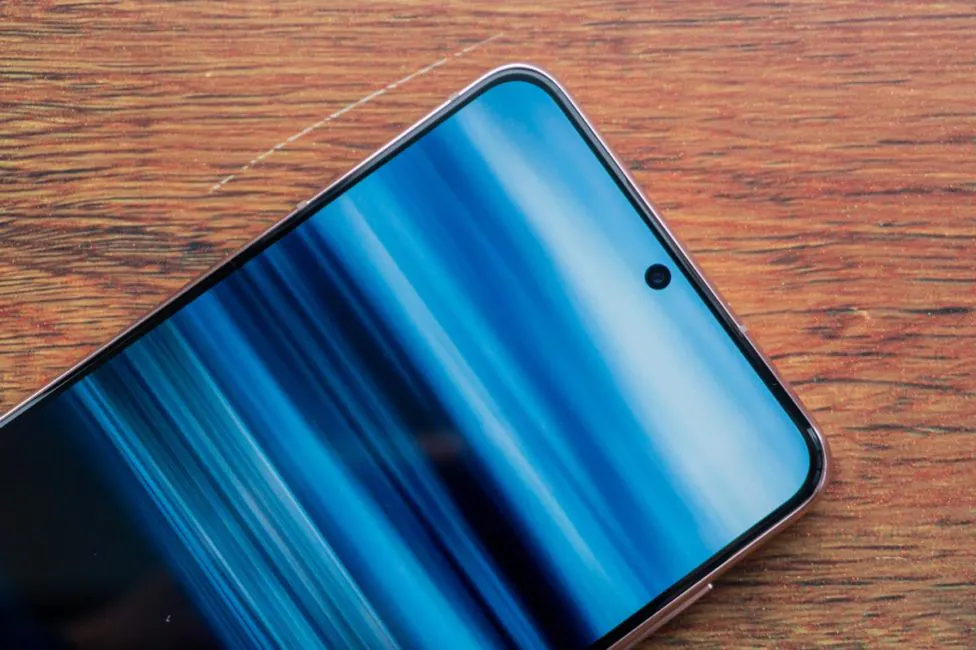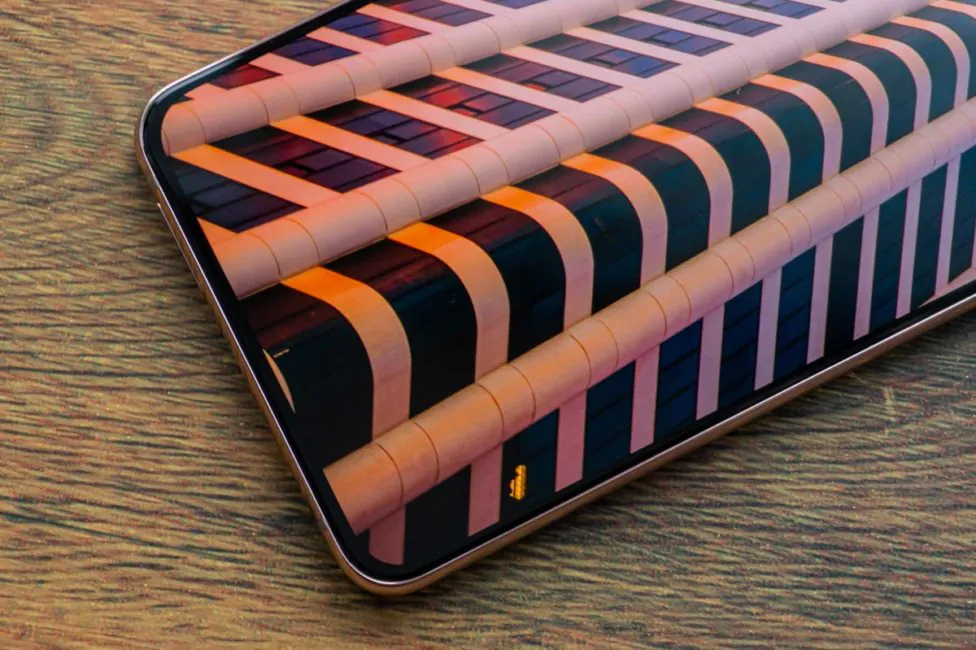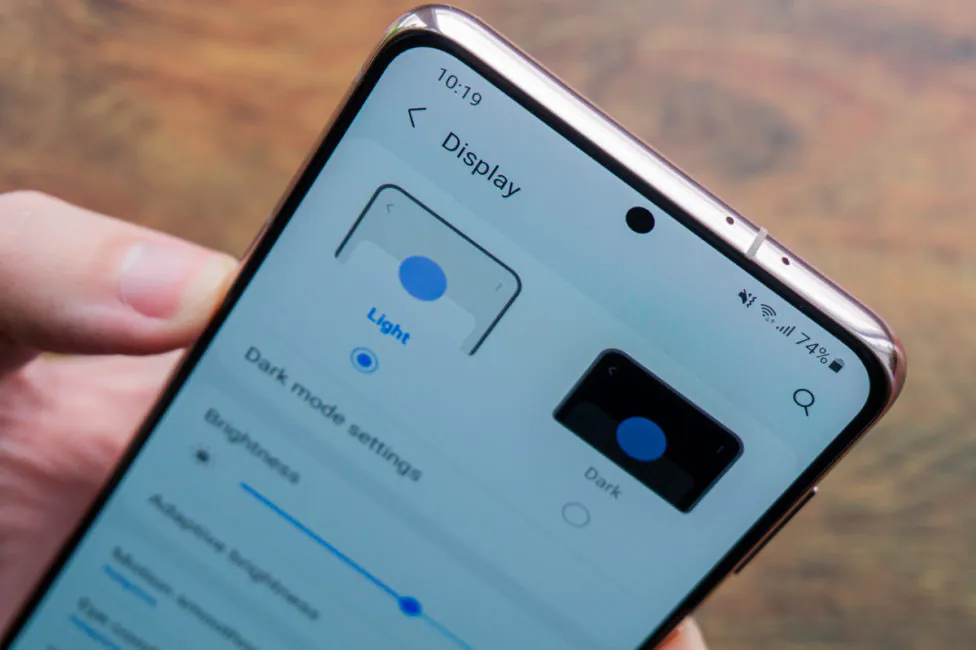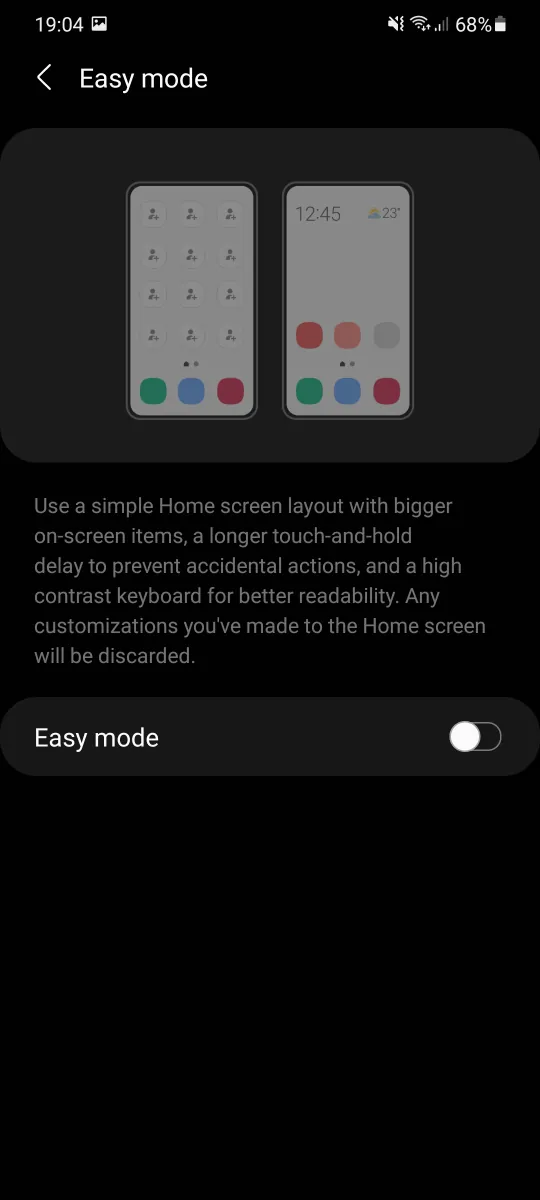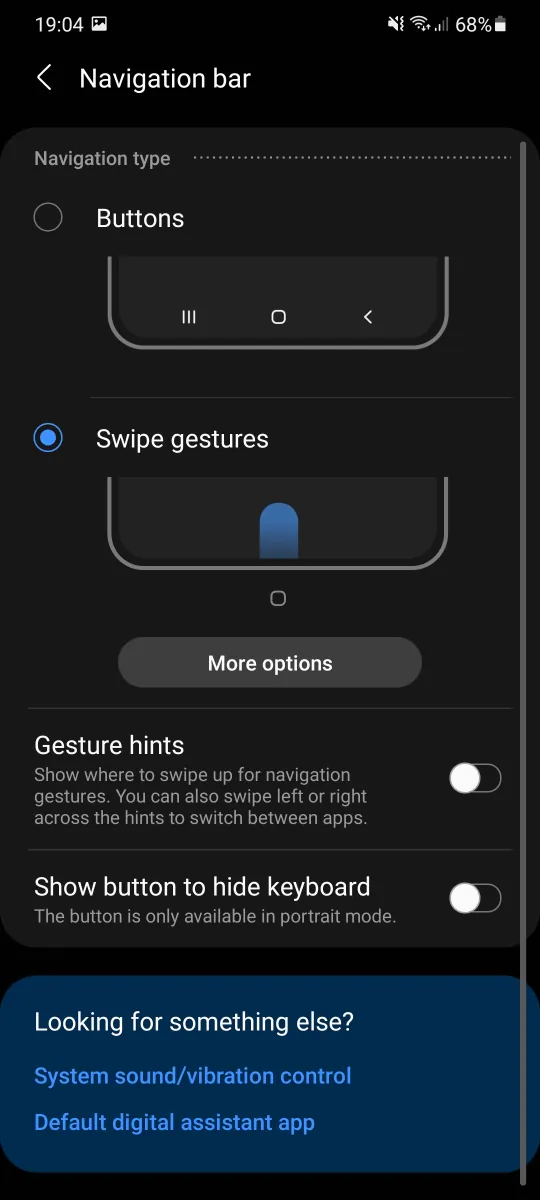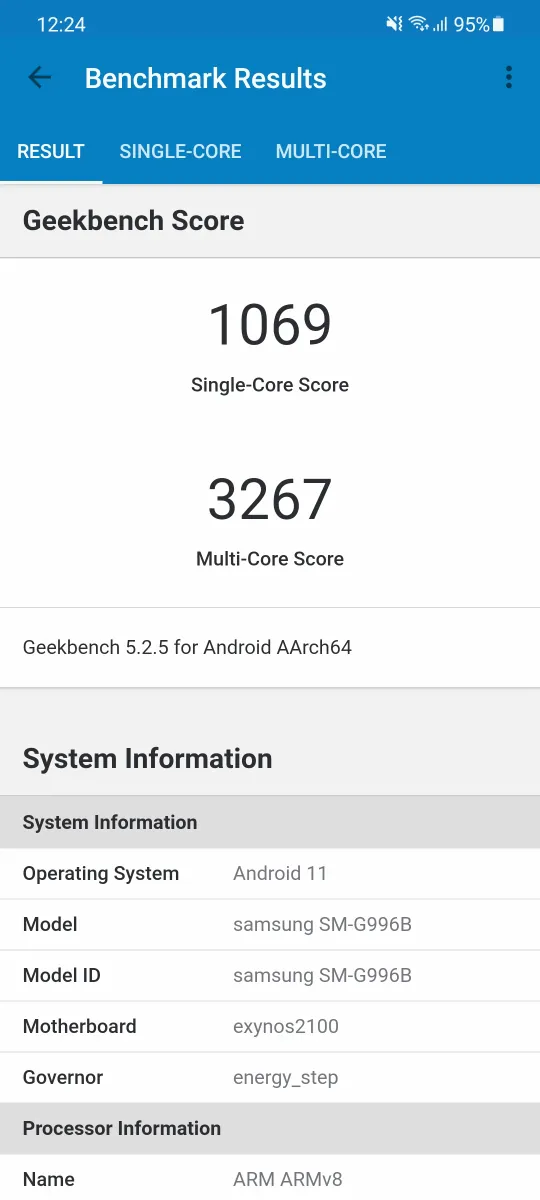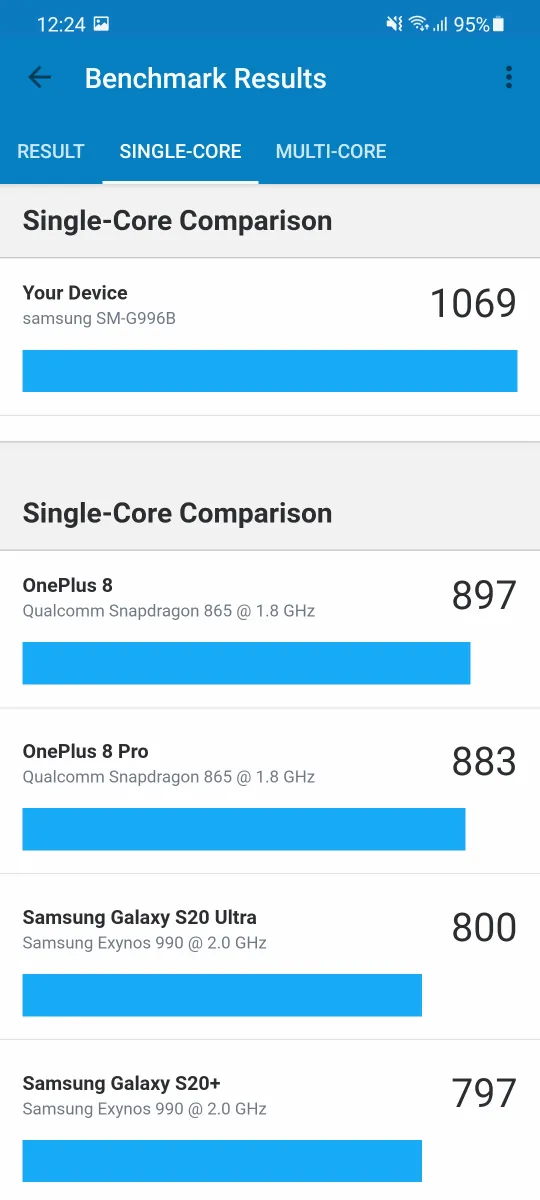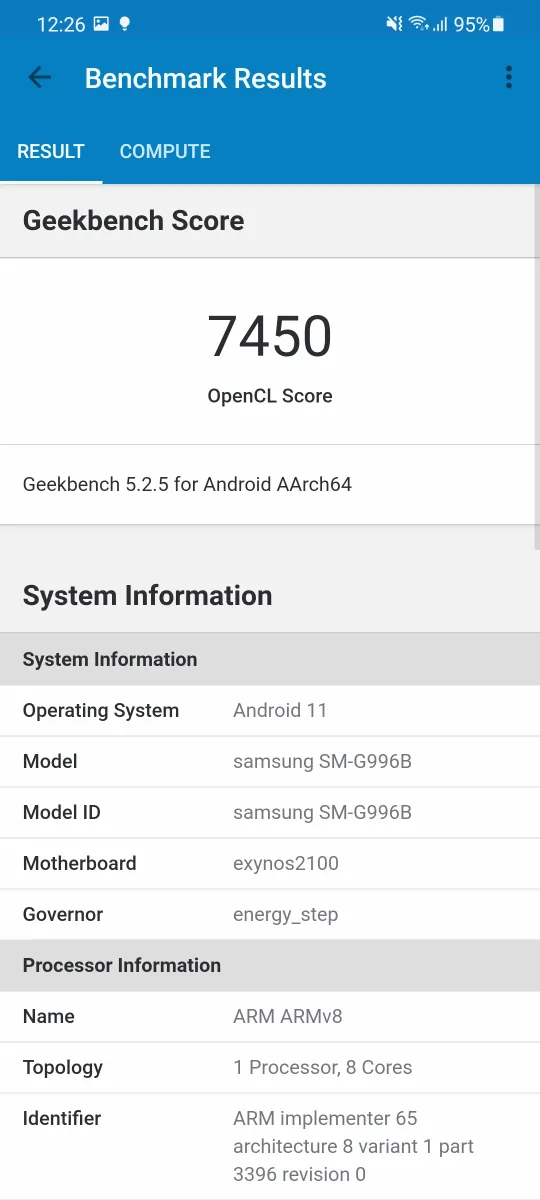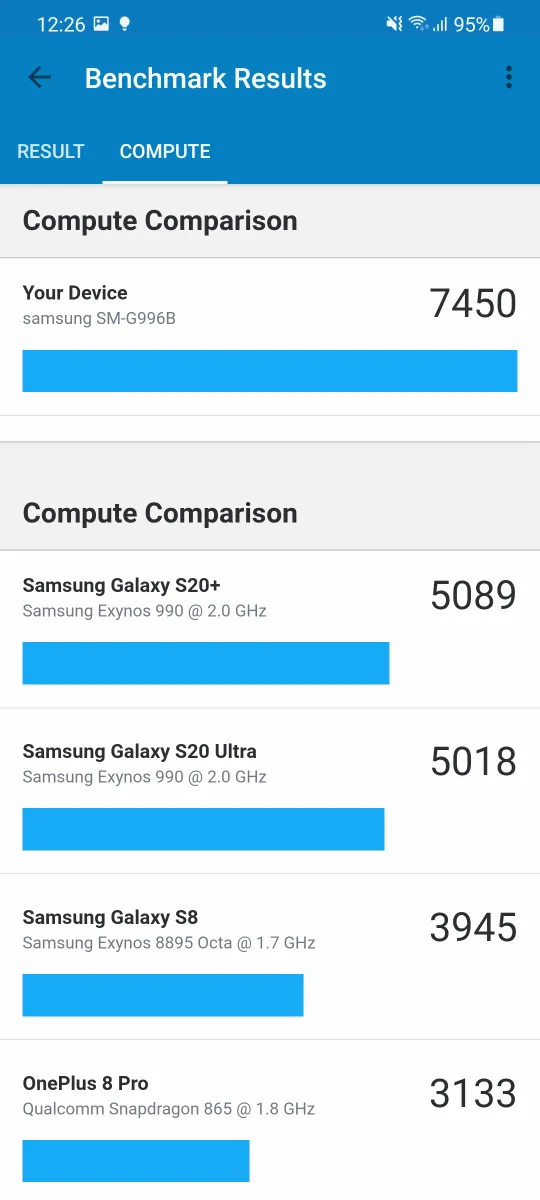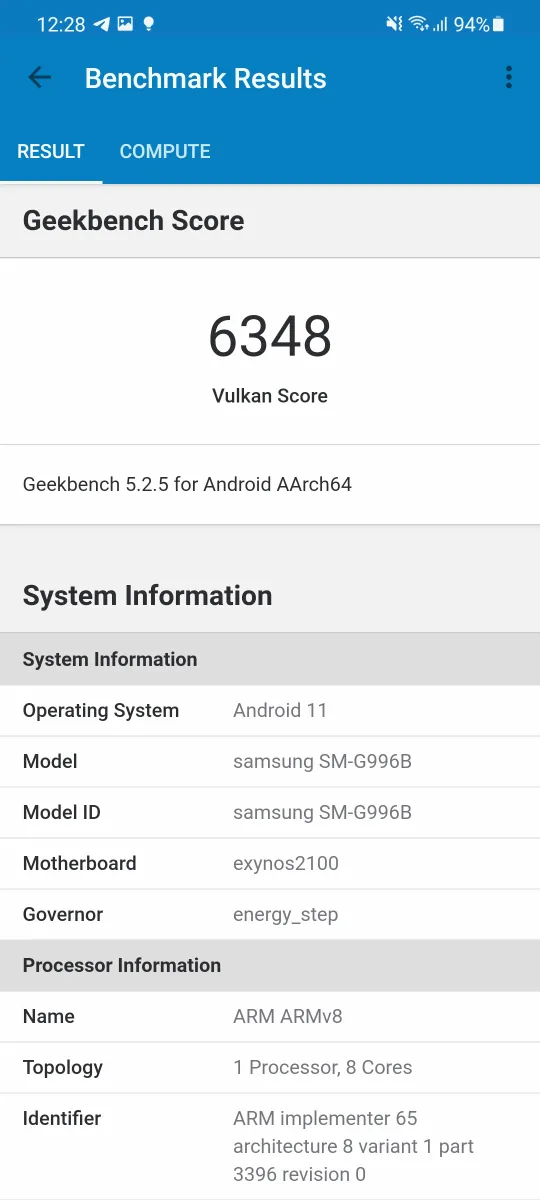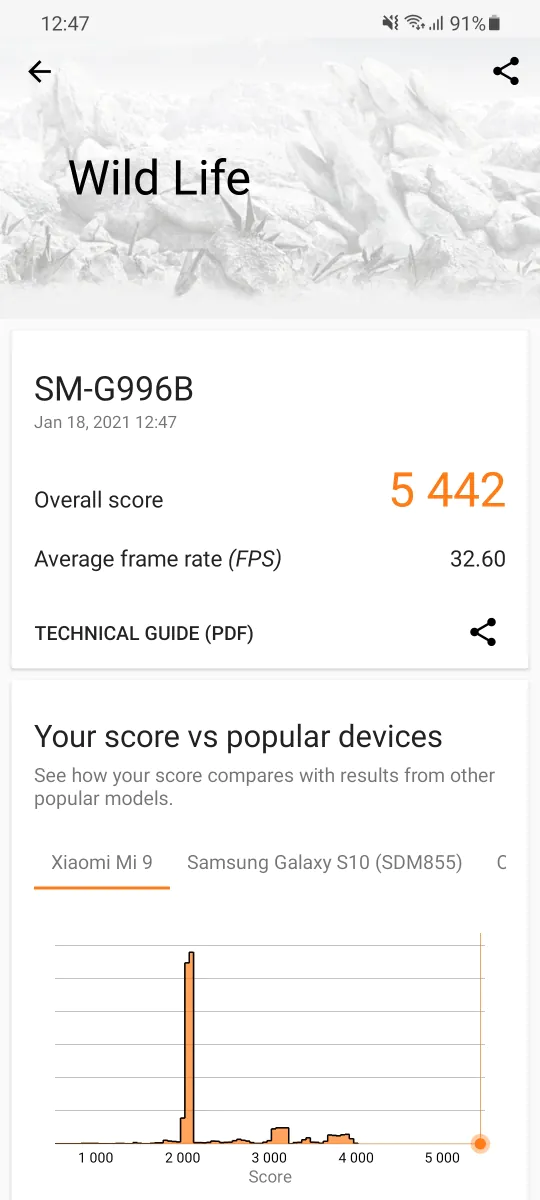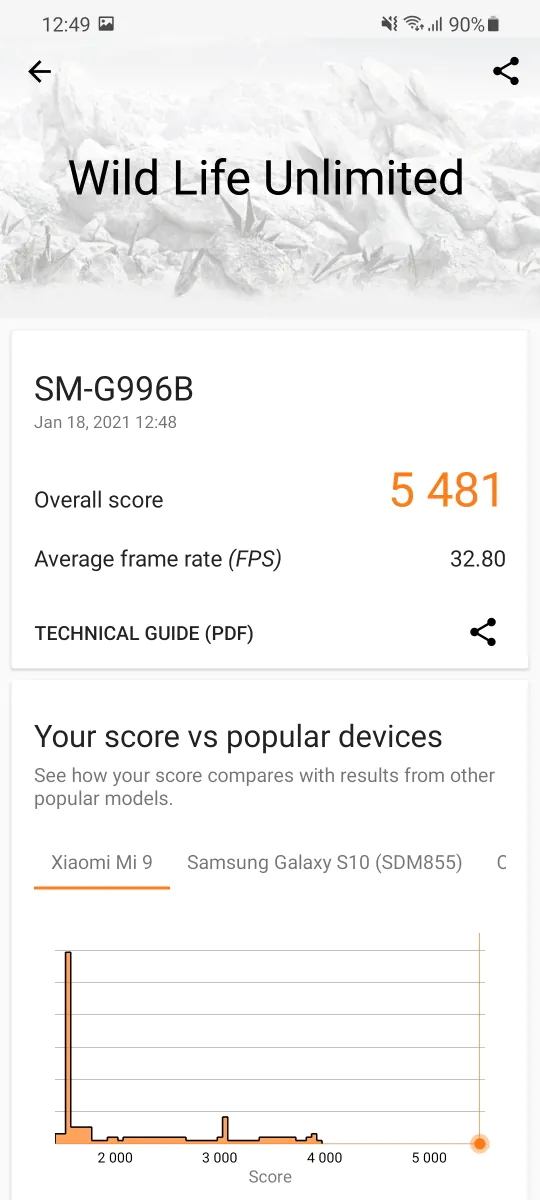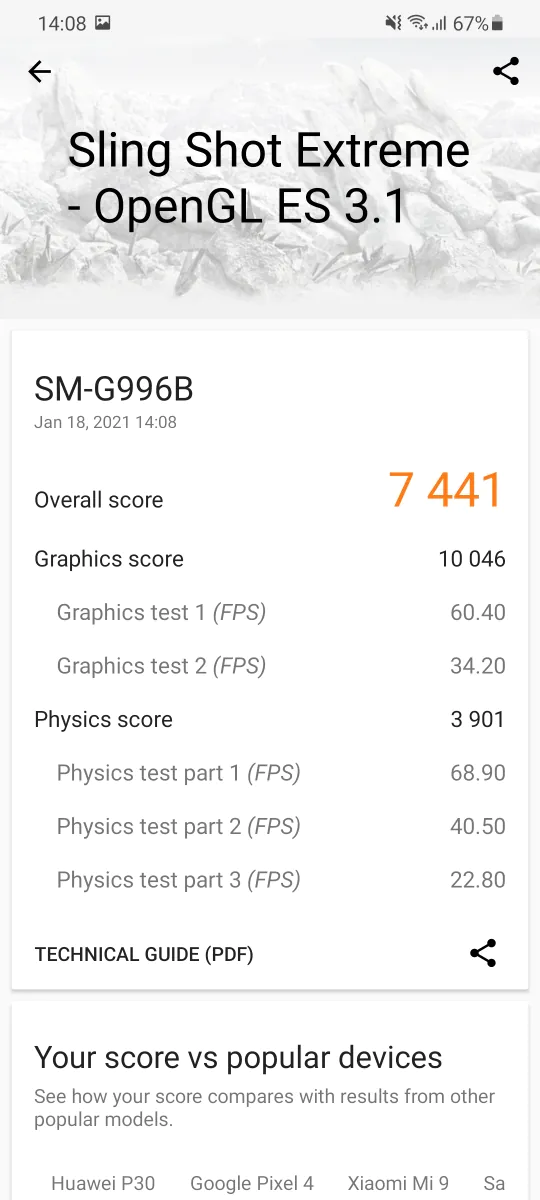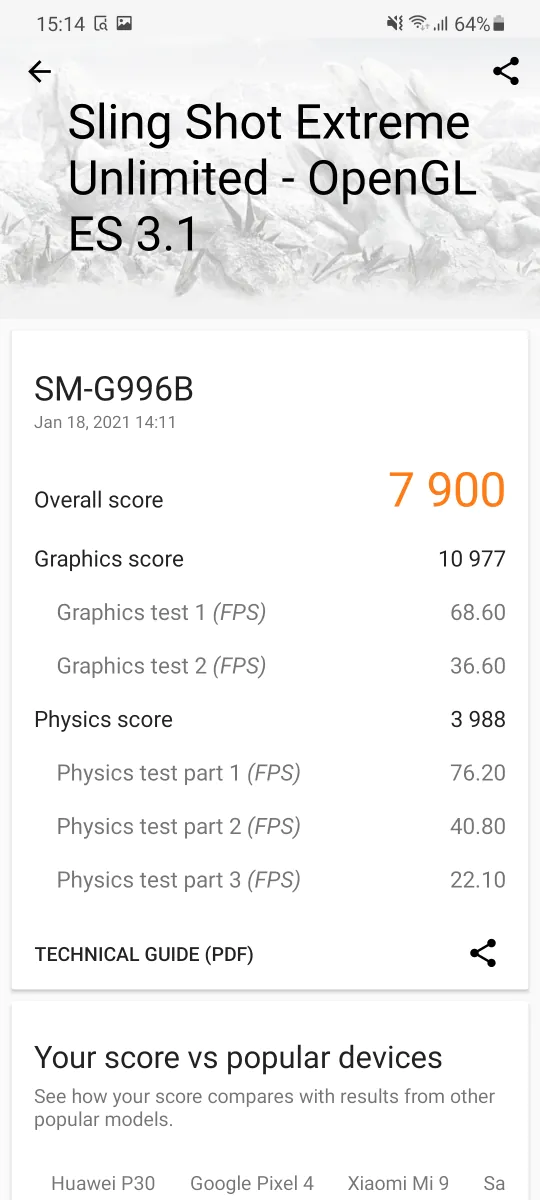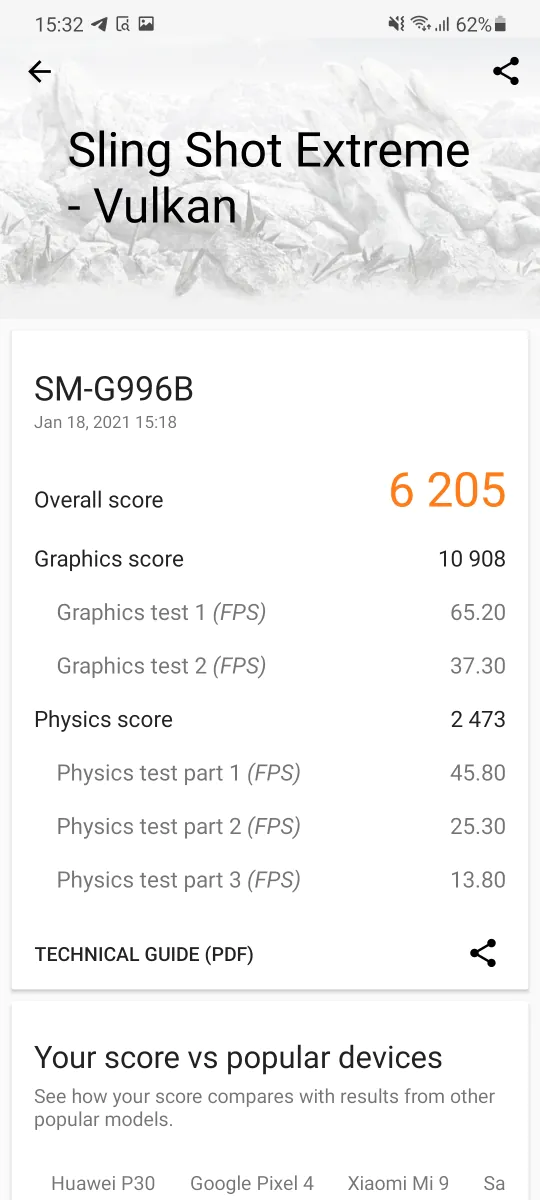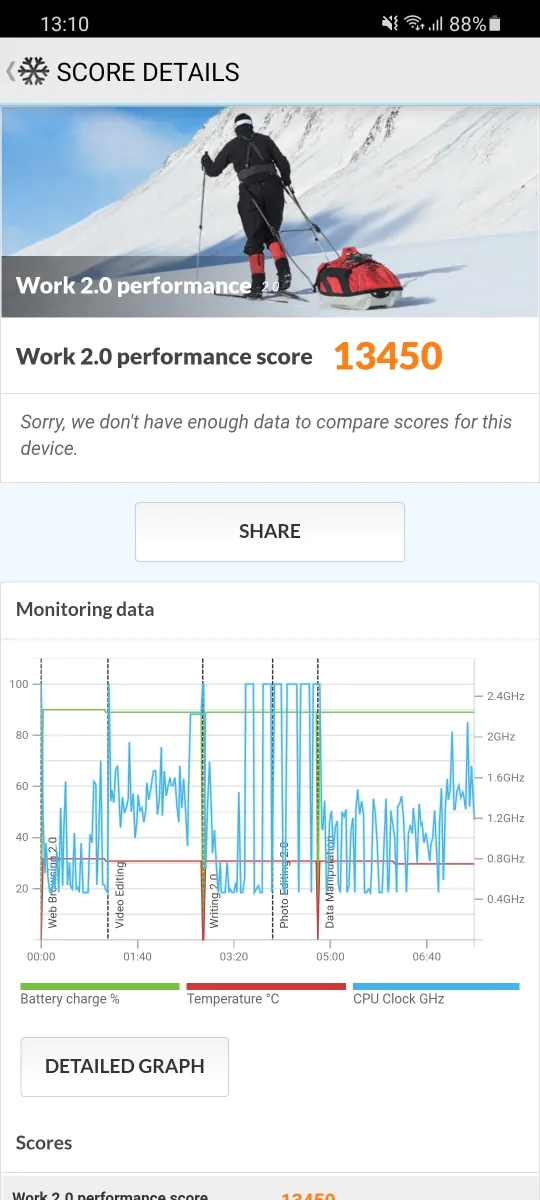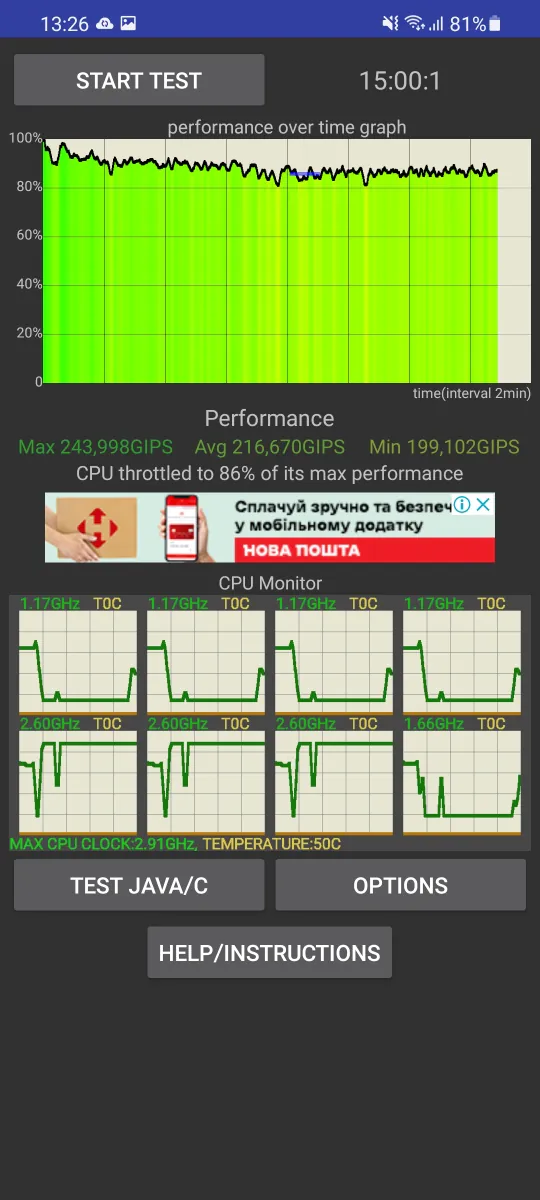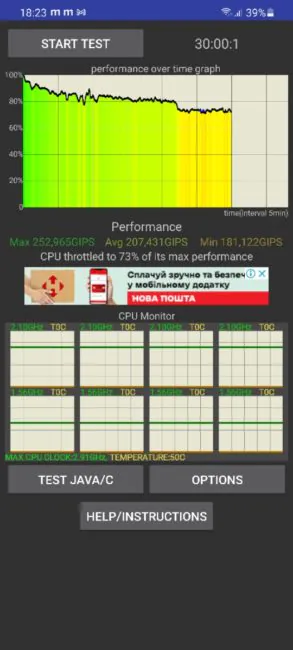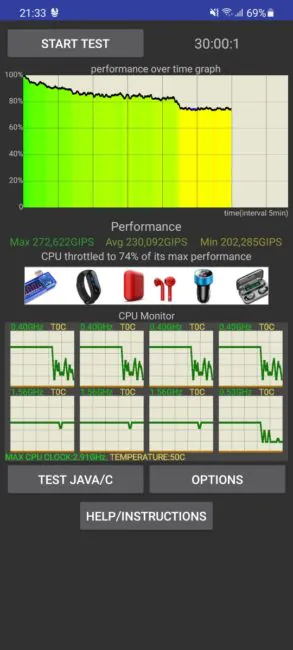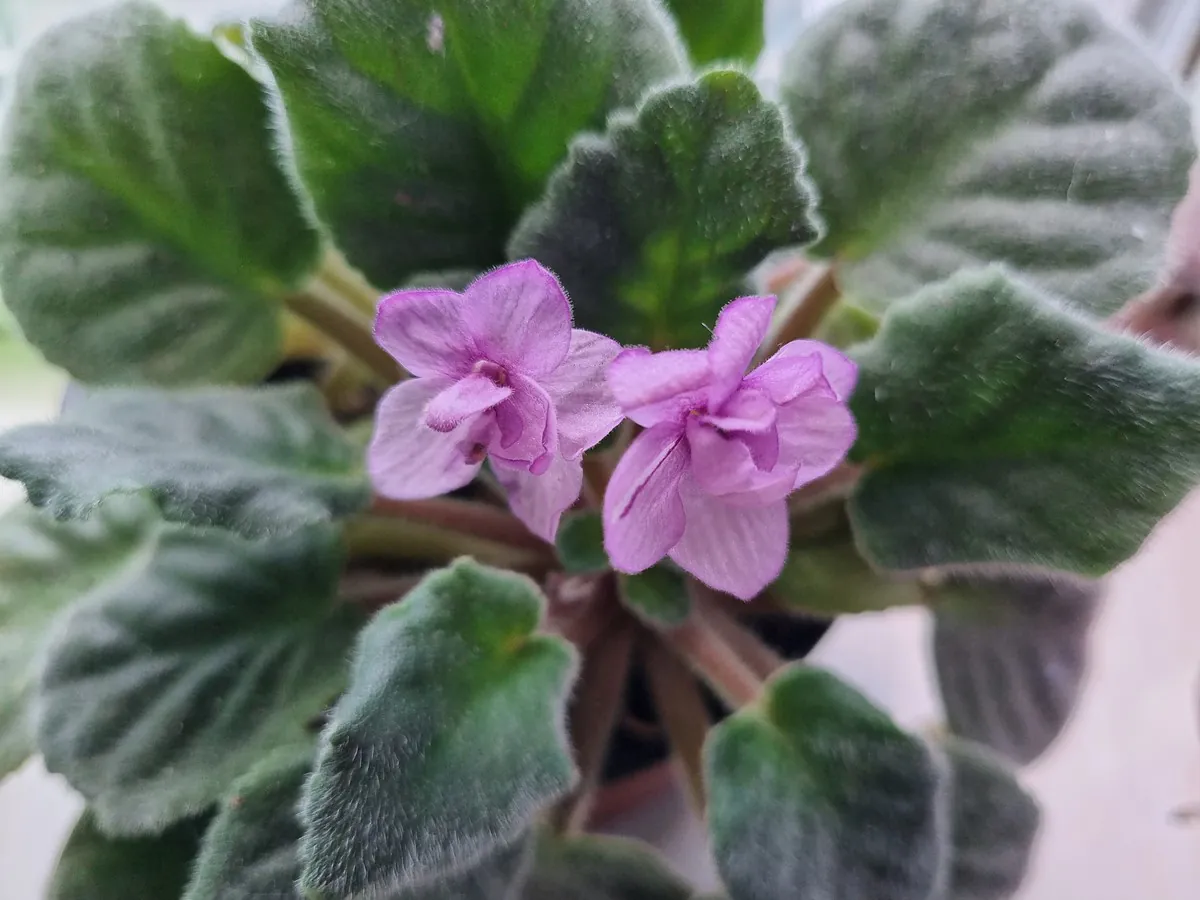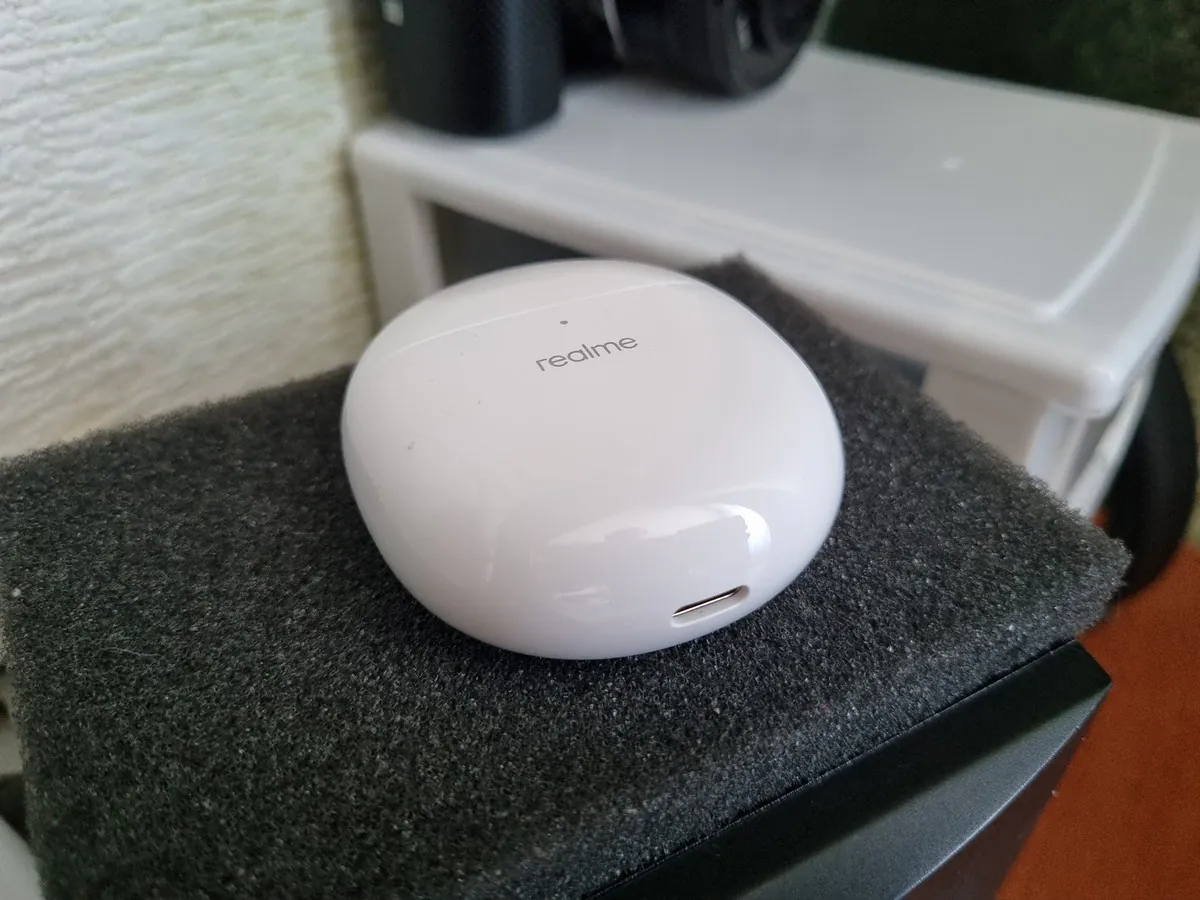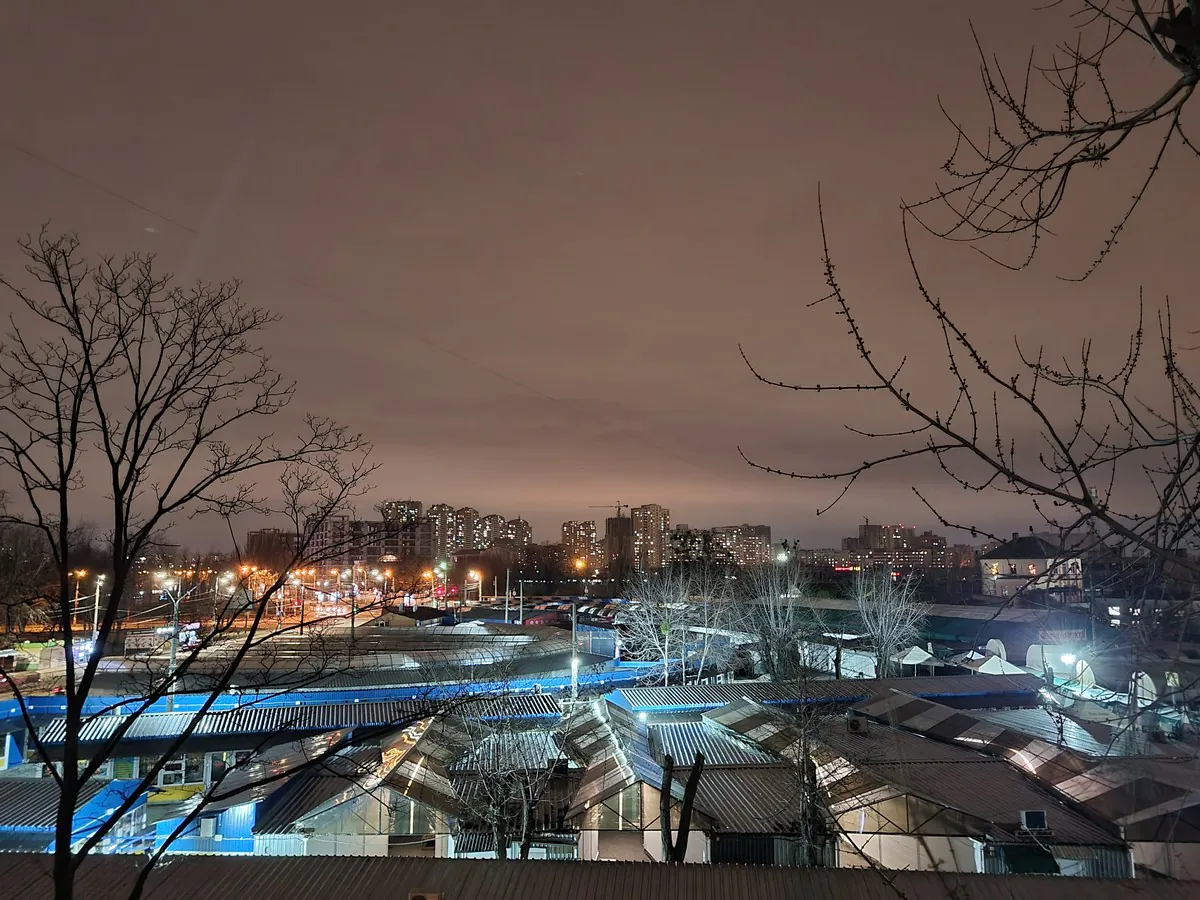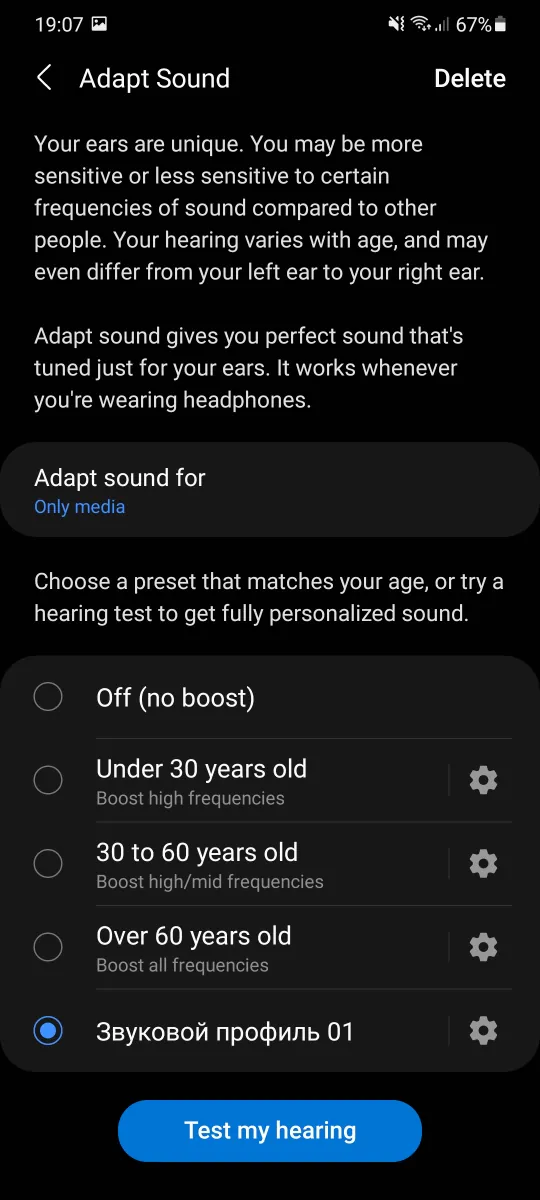© ROOT-NATION.com - Use of content is permitted with a backlink.
We continue getting to know the new line of Galaxy S smartphones, presented during the Galaxy Unpacked 2021 event. Recently we examined the Samsung Galaxy S21 Ultra, and now it’s time to take a closer look at the cheaper Samsung Galaxy S21+. Let’s figure out how the new product has changed compared to last year’s S20+, how it differs from the S21 Ultra, and whether the new “plus” deserves your attention.
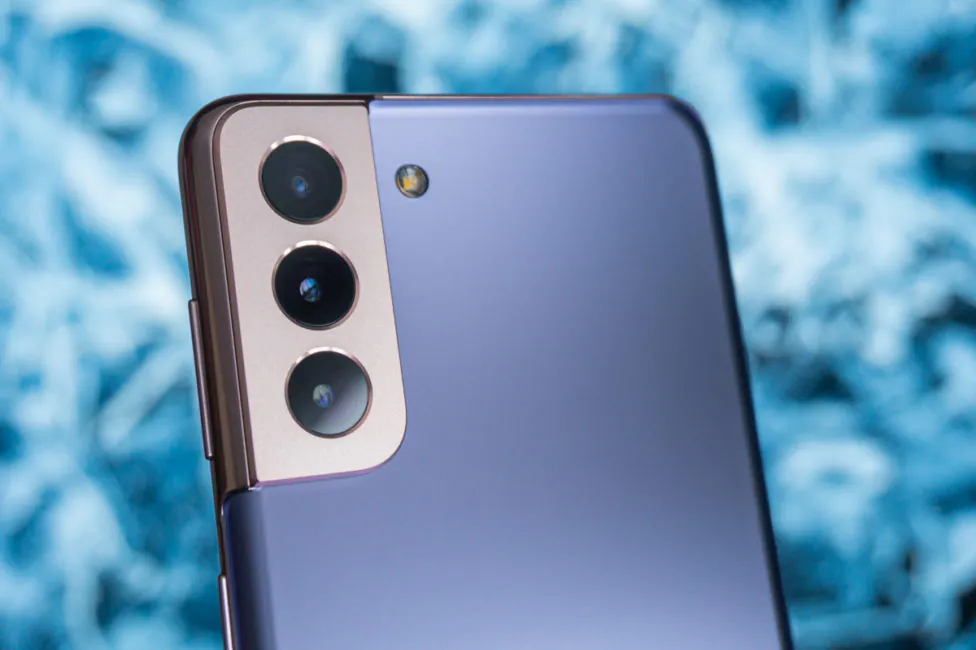
Samsung Galaxy S21+ Full Specifications
| NETWORK | Technology | GSM / CDMA / HSPA / EVDO / LTE / 5G |
|---|
| LAUNCH | Announced | 2021, January 14 |
|---|---|---|
| Status | Available. Released 2021, January 29 |
| BODY | Dimensions | 161.5 x 75.6 x 7.8 mm (6.36 x 2.98 x 0.31 in) |
|---|---|---|
| Weight | 200 g (Sub6), 202 g (mmWave) (7.05 oz) | |
| Build | Glass front (Gorilla Glass Victus), glass back (Gorilla Glass Victus), aluminum frame | |
| SIM | Single SIM (Nano-SIM and/or eSIM) or Dual SIM (Nano-SIM and/or eSIM, dual stand-by) | |
| IP68 dust/water resistant (up to 1.5m for 30 mins) |
| DISPLAY | Type | Dynamic AMOLED 2X, 120Hz, HDR10+, 1300 nits (peak) |
|---|---|---|
| Size | 6.7 inches, 107.8 cm2 (~88.3% screen-to-body ratio) | |
| Resolution | 1080 x 2400 pixels, 20:9 ratio (~394 ppi density) | |
| Protection | Corning Gorilla Glass Victus | |
| Always-on display |
| PLATFORM | OS | Android 11, One UI 3.1 |
|---|---|---|
| Chipset | Exynos 2100 (5 nm) – International Qualcomm SM8350 Snapdragon 888 (5 nm) – USA/China |
|
| CPU | Octa-core (1×2.9 GHz Cortex-X1 & 3×2.80 GHz Cortex-A78 & 4×2.2 GHz Cortex-A55) – International Octa-core (1×2.84 GHz Kryo 680 & 3×2.42 GHz Kryo 680 & 4×1.80 GHz Kryo 680 – USA/China |
|
| GPU | Mali-G78 MP14 – International Adreno 660 – USA/China |
| MEMORY | Card slot | No |
|---|---|---|
| Internal | 128GB 8GB RAM, 256GB 8GB RAM | |
| UFS 3.X |
| MAIN CAMERA | Triple | 12 MP, f/1.8, 26mm (wide), 1/1.76″, 1.8µm, Dual Pixel PDAF, OIS 64 MP, f/2.0, 29mm (telephoto), 1/1.72″, 0.8µm, PDAF, OIS, 1.1x optical zoom, 3x hybrid zoom 12 MP, f/2.2, 13mm, 120˚ (ultrawide), 1/2.55″ 1.4µm, Super Steady video |
|---|---|---|
| Features | LED flash, auto-HDR, panorama | |
| Video | 8K@24fps, 4K@30/60fps, 1080p@30/60/240fps, 720p@960fps, HDR10+, stereo sound rec., gyro-EIS |
| SELFIE CAMERA | Single | 10 MP, f/2.2, 26mm (wide), 1/3.24″, 1.22µm, Dual Pixel PDAF |
|---|---|---|
| Features | Dual video call, Auto-HDR | |
| Video | 4K@30/60fps, 1080p@30fps |
| SOUND | Loudspeaker | Yes, with stereo speakers |
|---|---|---|
| 3.5mm jack | No | |
| 32-bit/384kHz audio Tuned by AKG |
| COMMS | WLAN | Wi-Fi 802.11 a/b/g/n/ac/6, dual-band, Wi-Fi Direct, hotspot |
|---|---|---|
| Bluetooth | 5.0, A2DP, LE | |
| GPS | Yes, with A-GPS, GLONASS, BDS, GALILEO | |
| NFC | Yes | |
| Radio | FM radio (Snapdragon model only; market/operator dependent) | |
| USB | USB Type-C 3.2, USB On-The-Go |
| FEATURES | Sensors | Fingerprint (under display, ultrasonic), accelerometer, gyro, proximity, compass, barometer |
|---|---|---|
| Samsung DeX, Samsung Wireless DeX (desktop experience support) ANT+ Bixby natural language commands and dictation Samsung Pay (Visa, MasterCard certified) Ultra Wideband (UWB) support |
| BATTERY | Type | Li-Ion 4800 mAh, non-removable |
|---|---|---|
| Charging | Fast charging 25W USB Power Delivery 3.0 Fast Qi/PMA wireless charging 15W Reverse wireless charging 4.5W |
| MISC | Colors | Phantom Black, Phantom Silver, Phantom Violet, Phantom Pink, Phantom Gold, Phantom Red |
|---|
Samsung Galaxy S21+ price and positioning
The official recommended cost of the Samsung Galaxy S21+ is about $1100 for the basic version with a 128 GB drive and $1200 for the version with 256 GB of storage. The amount of RAM is the same in both versions (8 GB), so you will have to choose solely based on the amount of storage.
The price and positioning are peculiar. If the price tag of the base Galaxy S21 Ultra at the start does not differ from the original cost of last year’s S20 Ultra, then for the Samsung Galaxy S21+ Samsung asks more than for the Samsung Galaxy S20+. Whether the rise in price by ~ $70 is justified is a question we will try to answer in this text, but first I would like to note another interesting fact.
At the time of this review, the MSRP for the base S21+ is identical to that of the Samsung Galaxy Note20 Ultra. The second also has more storage for the same price. And it is the latest and most advanced member of the Galaxy Note line now. Yes, it is somewhat inferior to the Galaxy S21+, but in some places it surpasses it.
Let me also remind you that those who pre-order new devices before 02/04/2021 are entitled to gifts. In the case of the regular Galaxy S21 and Galaxy S21+, you can get Galaxy SmartTag tracker and a certificate for purchasing accessories and wearable gadgets from Samsung.
What’s in the box
This year, the boxes of the S21 series have lost some weight. The power adapter and AKG wired headset have disappeared from the set of all new products. So along with the smartphone, the buyer will only receive a USB Type-C/Type-C sync cable, a SIM card eject tool and paper documentation. Why is that I told in the review of the Samsung Galaxy S21 Ultra, so I won’t repeat myself. It’s unpleasant to say the least.
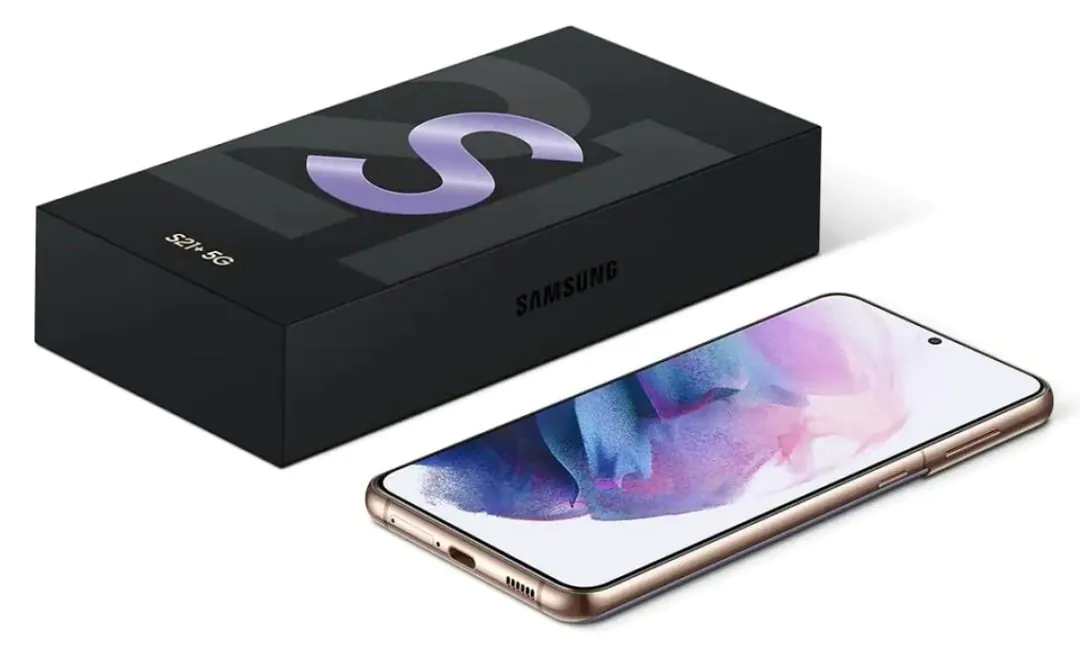
Design, materials and the build quality
Fortunately, the design of the Samsung Galaxy S21+ is good. Unlike the flagships of the S-series from the last year, now not only the Ultra, but also cheaper models stand out. Galaxy S21+ looks an order of magnitude more interesting and unique than its predecessor, which, let me remind you, could easily be confused with some mid-range device from the A-series, for example.
The highlight of the new design is a block with cameras, with an aluminum frame on top and from the side of it. This solution is very interesting. I’d go as far as to say it looks unusual, unique and recognizable. It’s much more interesting than a simple black rectangle with rounded corners.
The block itself is noticeably smaller than that of the S21 Ultra, but it is quite similar. It is metallic, with a matte finish on the top and a glossy bevel around the perimeter and inside the rings. The glass of the cameras is slightly recessed; there are only three of them. At the same time, the flash is separate from the unit.
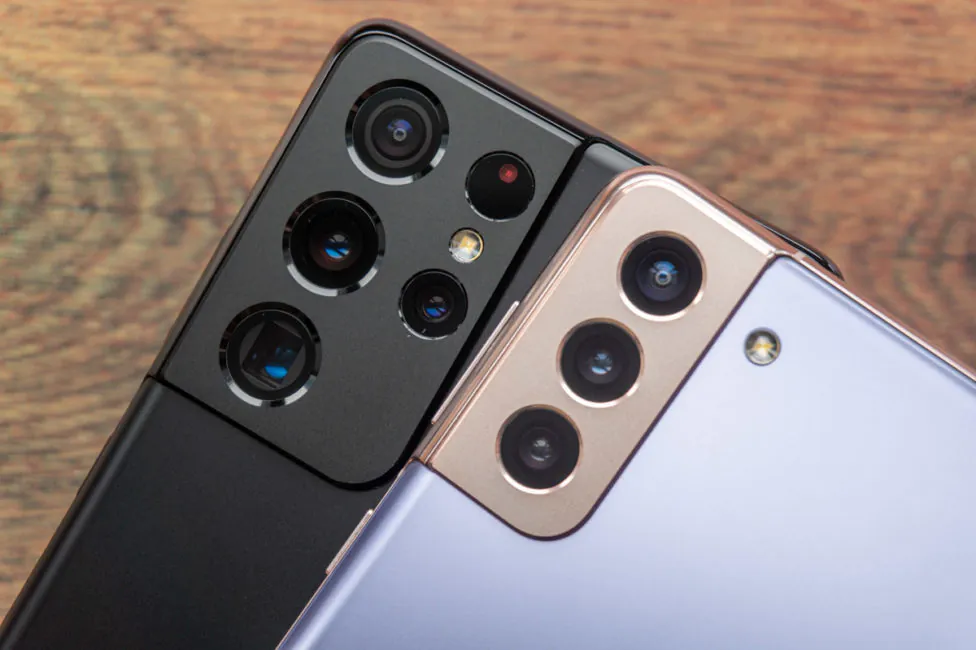
The next feature is the matte Gorilla Glass on the back. It is pleasant to the touch, does not get dirty, and harmonizes well with glossy elements, chamfer of the camera block and the Samsung logo on the bottom. And although much depends on the color of the case, but from my personal experience I can say that even in black it looks great.
Read also:
- Samsung Galaxy M51 review: Snapdragon 730G and 7000 mAh battery
- Samsung Galaxy M31s review – Mid-Ranger That Gets The Job Done
There 5 possible colors and besides black and silver Phantoms. For example, purple with gold, like mine. Or red and gold, with the same gold accents. However, the latter two are not available in all markets.
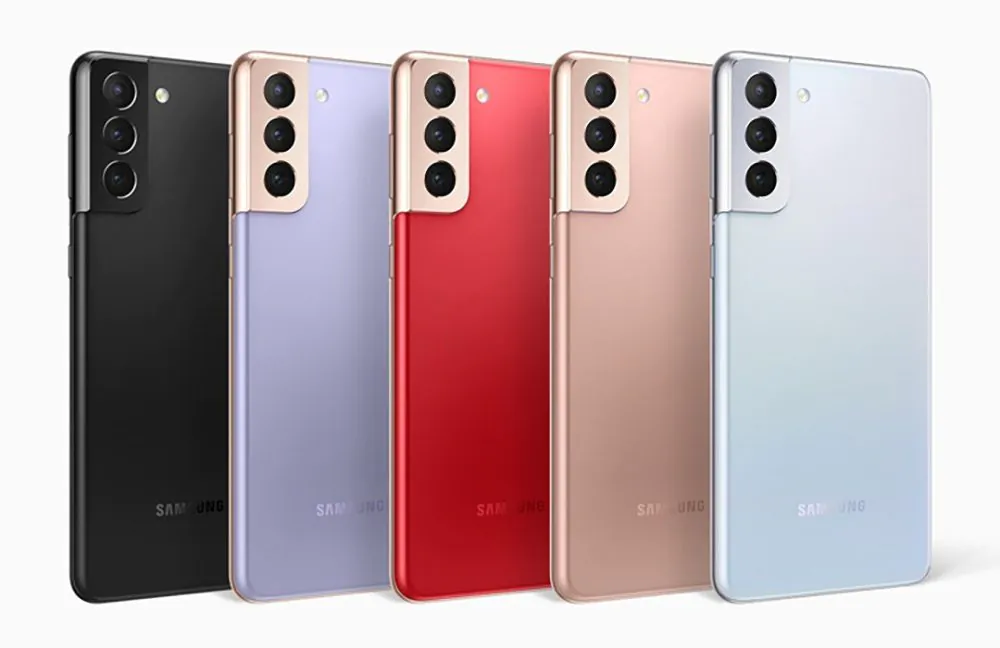
There is one change in front – now the glass on the sides is not curved at all. Just a slight 2.5D rounding around the glass. If you want to somehow protect the screen, the protective glass will look neater. But for those who do not glue anything on top, the joint between the edge of the glass and the frame will be much more obvious.
Otherwise, no changes. The bezels are thin, but they are not the same width on all four sides. The front-facing camera is cut into the screen in the middle. It’s the best format at the moment, considering the small diameter of the camera. The panel is covered with Gorilla Glass Victus with an excellent oleophobic coating.
Nothing else new can be said about the body. It is aluminum, glossy, and has different thicknesses in different places. Of course, due to the glossy finish, it will attract fingerprints like crazy without a protective case. The build quality is perfect. There’s also the IP68 standard.
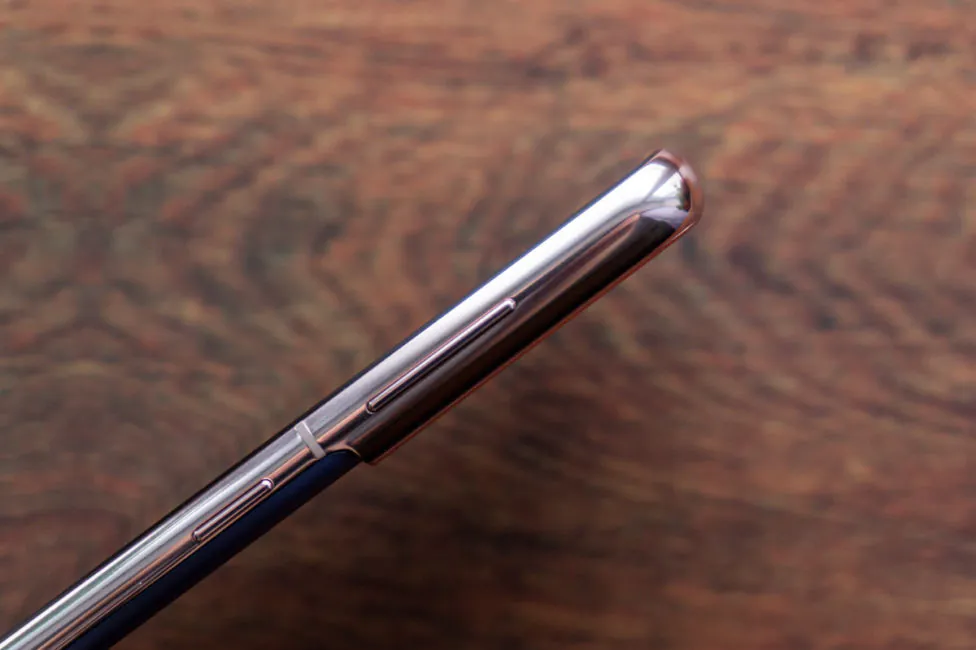
Elements configuration
In this regard, there are no differences from the senior model. In front you only get a thin slot of the earpiece speaker, a selfie camera, as well as light and proximity sensors.
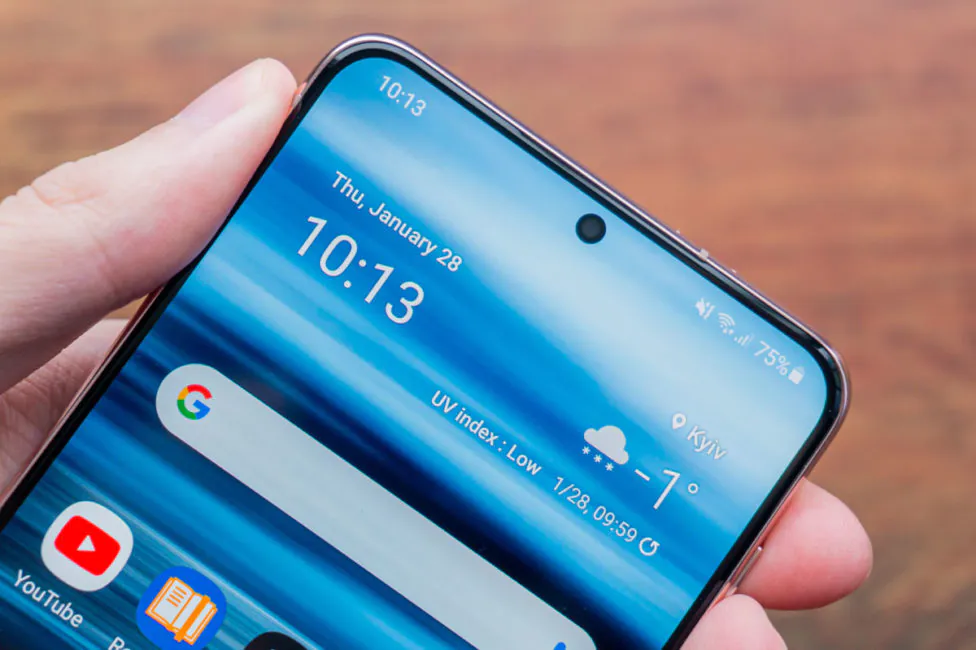
On the right side there are only two metal buttons: power and volume. You will not find any other additional keys on the left.
Above there are two round holes with microphones, and at the bottom there are slots for the main multimedia speaker, a USB Type-C port, a microphone and a slot for two nanoSIM cards. You can’t put a memory card here either.
At the back in the upper left corner there is the aforementioned block with cameras and a flash next to it, and in the lower part of the device in the middle there is the manufacturer’s logo and some text.
Ergonomics
When it comes to ease of use, the Samsung Galaxy S21+ is better than the S21 Ultra due to a slightly smaller screen and therefore smaller body dimensions: 161.5 × 75.6 mm. Also, the thickness (7.8 mm versus 8.9 mm), as well as the weight (200 grams versus 227 grams) of the Ultra have a tangible effect.
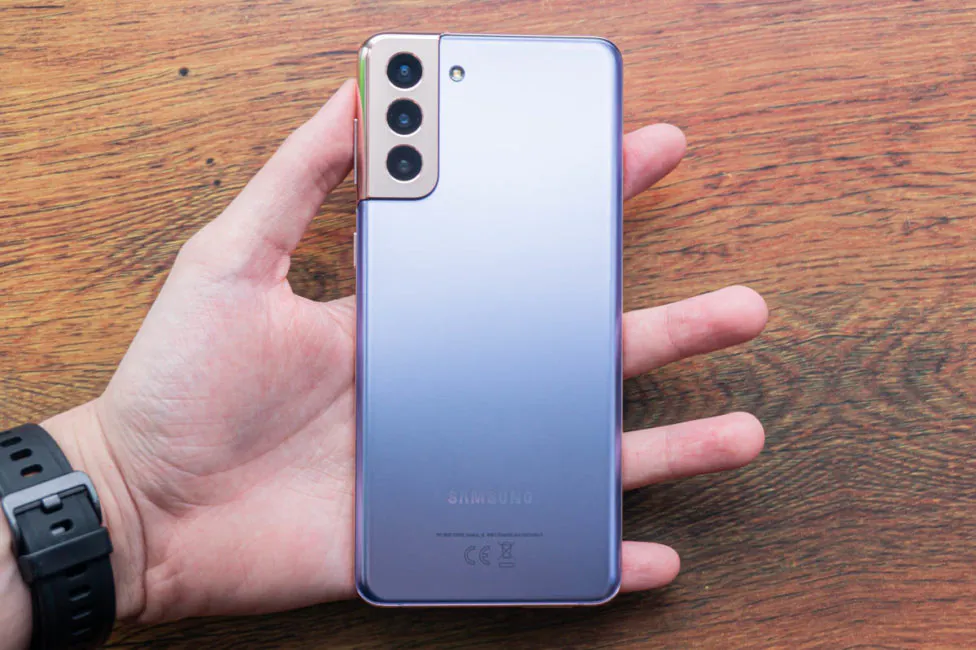
For the rest of the key points, everything is pretty much similar. The glossy body requires a more secure grip, or the device may slip out of your hand. The camera block also protrudes above the surface of the back plate, but not so much. The buttons are also placed at a good height.
Read also:
- Samsung Galaxy S20 FE (Fan Edition) review – Not Only for the Fans
- Samsung Galaxy Z Fold2 review. Not a Concept Anymore
Display
The display of the Samsung Galaxy S21+ is a bit simpler. Certain features of the S21 Ultra screen are gone, or been implemented a little differently. The size of the screen is 6.7″, the matrix type is the same, Dynamic AMOLED 2X, but the resolution is Full HD+ (2400×1080 pixels). The aspect ratio is 20:9, the pixel density is 394 ppi, HDR10+ and dynamic 120 Hz have been invited to the party.
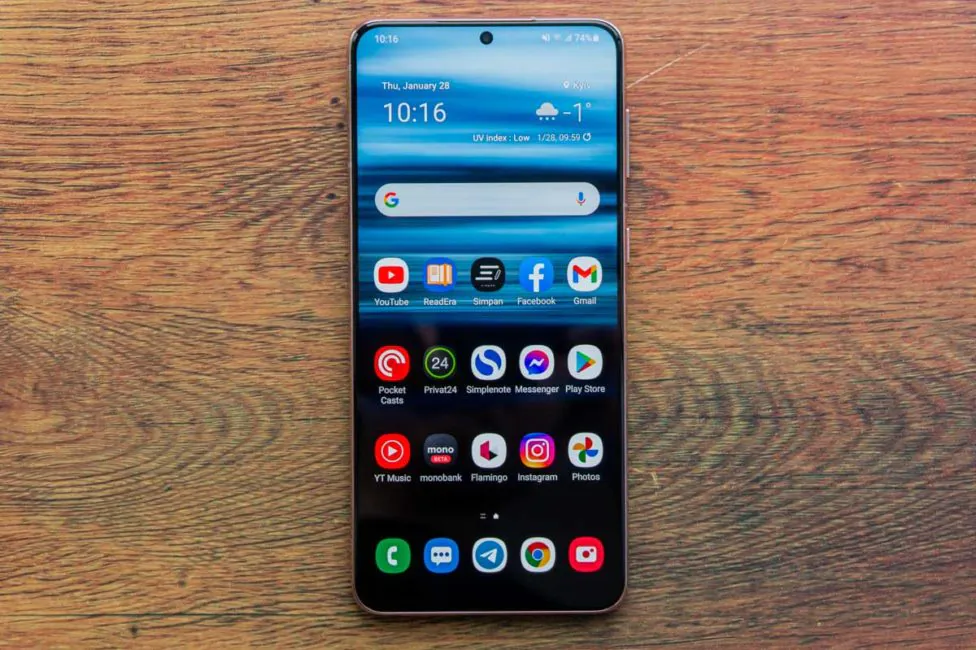
But what has changed? First, the resolution is lower. Even its predecessor, the Galaxy S20+, had WQHD+. To be fair, the increased refresh rate affected this, but nevertheless. Is this a problem? I think not. For such a size, this is quite enough, but… a downgrade is a downgrade.
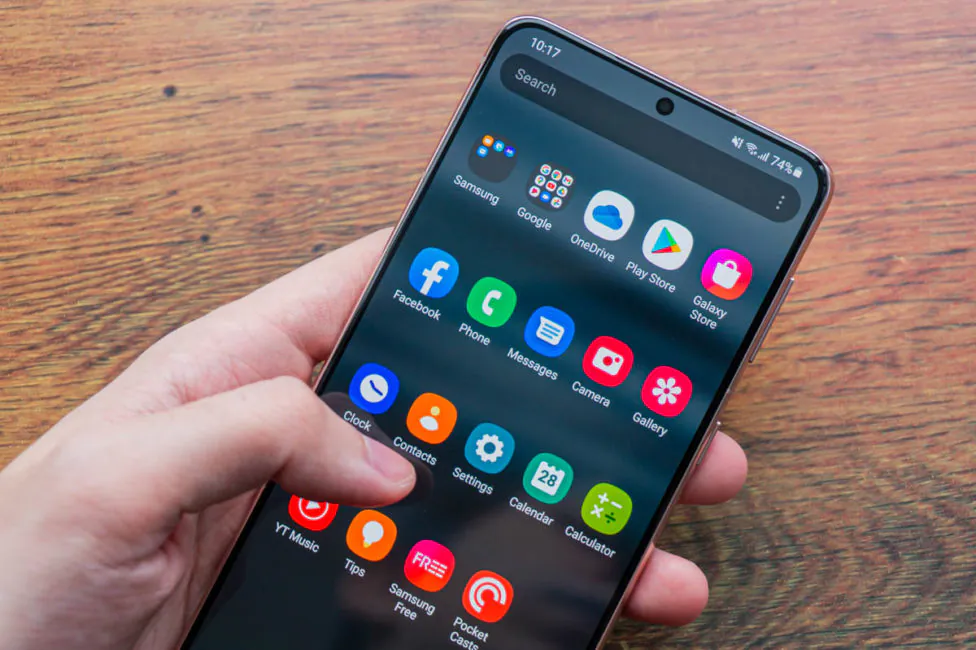
Also, compared to its predecessor, the peak brightness is slightly higher here, 1300 nits, not 1200 nits, but the S21 Ultra has 1500 nits. Dynamic refresh rate is supported, yes, but it works from 48 to 120 Hz. The minimum value is 48 Hz, and not 10 Hz. Finally, Galaxy S21/S21+ did not receive support for the S Pen.
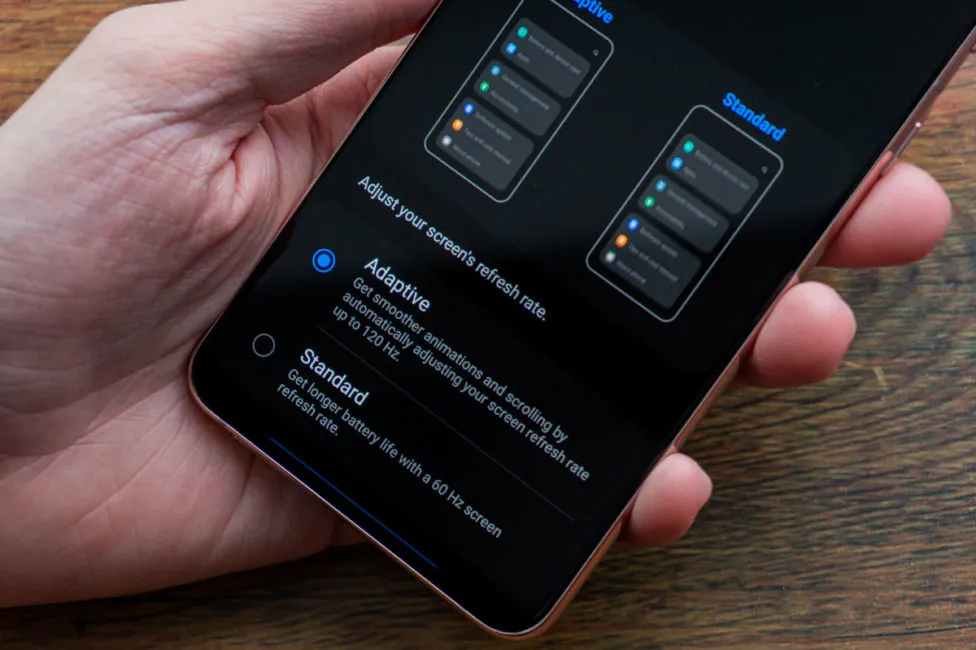
But all these simplifications did not spoil the impression of the display – it is excellent. There is plenty of brightness, as well as contrast and saturation. But I noticed that gray at minimum brightness turns red.
The viewing angles are wide as always, but with the traditional blueish white at an angle. Although due to the entirely flat screen, there is no distortion or shading around the edges.
The settings are almost completely copied from the Ultra model. You can’t choose the resolution, but otherwise everything is the same: a light/dark theme with a schedule, a choice between adaptive 120 Hz or standard 60 Hz, as well as an option to reduce blue light with an adaptive or static value of the screen color temperature. In addition, you can choose the size and style of the font, change screen scaling, and force apps into full screen mode. Next is the screen timeout, simple mode with large desktop icons, Edge sidebars and three types of system navigation (buttons/gestures/swipes from the bottom edge). You can activate accidental touch prevention and increase the sensitivity of the sensor. The highly configurable Always On Display settings can be found in a separate menu.
Samsung Galaxy S21+ performance
The entire Galaxy S line has long been shipped with different chipsets to different markets. In most regions, Samsung is importing smartphones with its own Exynos chips, while the US and Chinese markets get Qualcomm platforms. This year, things stayed the same and smartphones of the current S21 series are equipped with either SoC Exynos 2100 or Qualcomm Snapdragon 888. In our case, Exynos 2100.
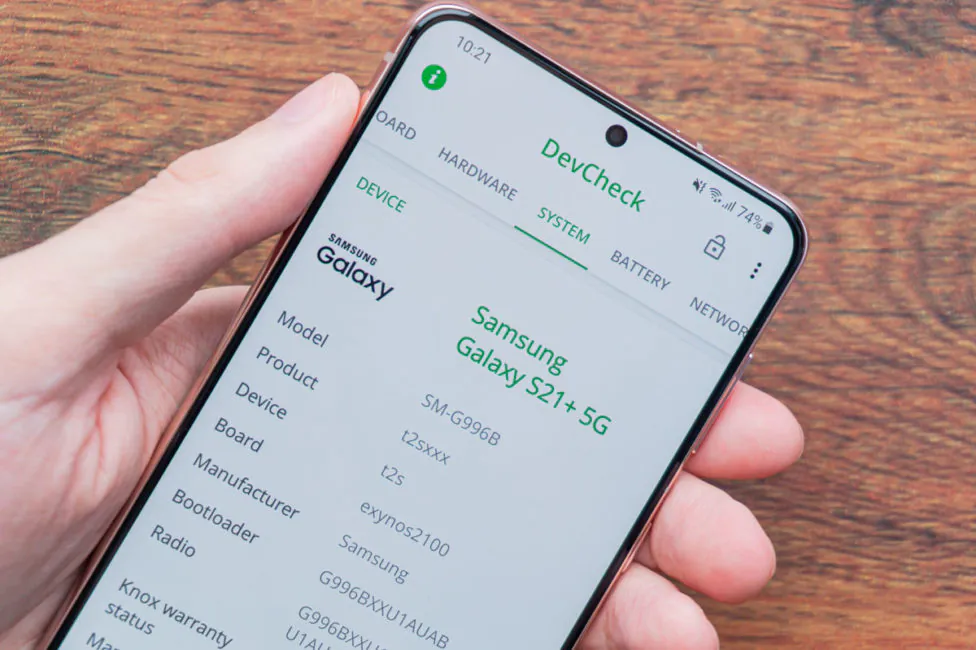
The platform is based on a 5-nm process and includes 8 computing cores, which are divided into three clusters: 1 Cortex-X1 core operating at a maximum clock frequency of up to 2.9 GHz, 3 Cortex-A78 cores with a clock speed of up to 2.8 GHz and the third cluster includes 4 Cortex-A55 cores clocked at up to 2.2 GHz. The graphics accelerator uses a 14-core Mali-G78 MP14. I left all other details about the new chip in the Galaxy S21 Ultra review. Now let’s look at the numbers in various benchmarks.
Interestingly, in the throttling test, the Galaxy S21+ performed even slightly better than the S21 Ultra. Yes, the percentage of performance loss in the half-hour test turned out to be almost the same in the end, but the maximum, average and minimum performance values in GIPS are higher. And here, for comparison, is the same test of its predecessor – Galaxy S20+. The minimum performance value of the new product is more than twice as high, and the rest are also just excellent in comparison. The new Exynos chip itself turned out to be really good, and even more so in comparison with the Exynos 990.
The amount of RAM is only 8 GB (LPDDR5) type. Not as good as 12 or 16 GB in Ultra, but 8 GB is still quite good. This is enough just for everything you might want. There can be either 128 or 256 GB of storage, UFS 3.1. And I still think 128GB is not enough for a near-top flagship right now. But what can you do even when even the Ultra is the same? Also, the smartphone does not have a slot for a microSD memory card. My model is 128 GB, of which 106.22 GB are available to the user.
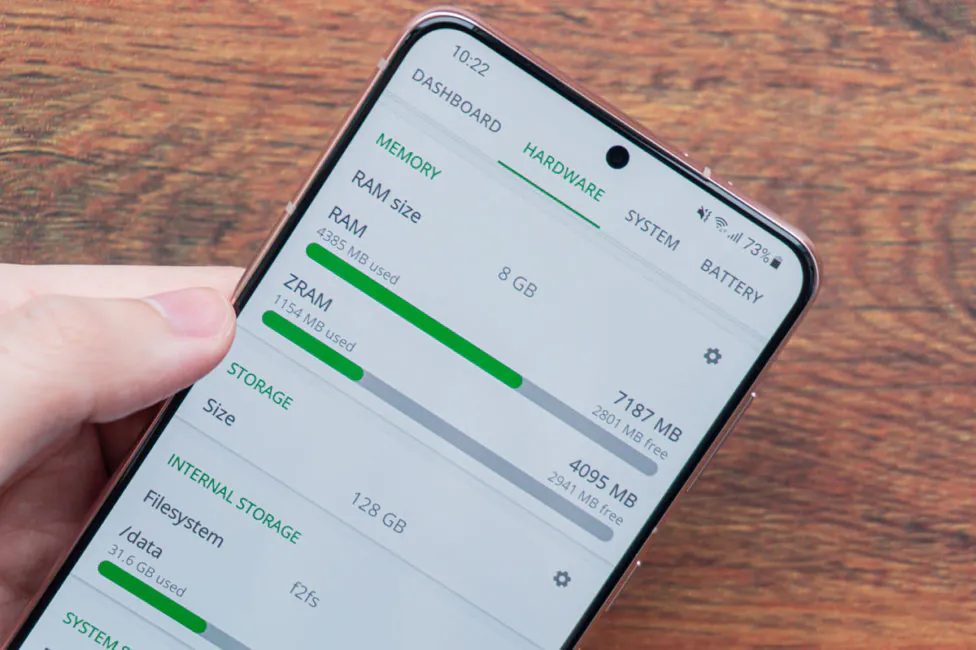
When it comes to performance, the Samsung Galaxy S21+ is excellent. I talked about games in more detail in the review of the S21 Ultra, so you will find all the details and subtleties there. But in short, almost any demanding title will run flawlessly at the highest settings possible. Here are the FPS measurements taken with the Gamebench utility:
- Call of Duty: Mobile – on high, all effects enabled, Battlefront mode is ~ 60 FPS; Battle Royale is ~ 60 FPS
- PUBG Mobile – on maximum with anti-aliasing and shadows, ~ 40 FPS (limited by the game itself)
- Shadowgun Legends — on ultra-high, ~60 FPS
Read also:
- Samsung Galaxy Note20 Ultra review – The Devil Is in the Details
- Samsung Galaxy Z Flip review – Ultra-modern flagship flip phone
However, Samsung gaming services continue to negatively affect the behavior of some titles, and it is no longer as easy to disable them. This is noticeable in Shadowgun Legends, which at first runs at above 60 fps, and then some kind of limitation is suddenly kicks in. Or Genshin Impact, where the counter shows 60 FPS, but the game is far from smooth.
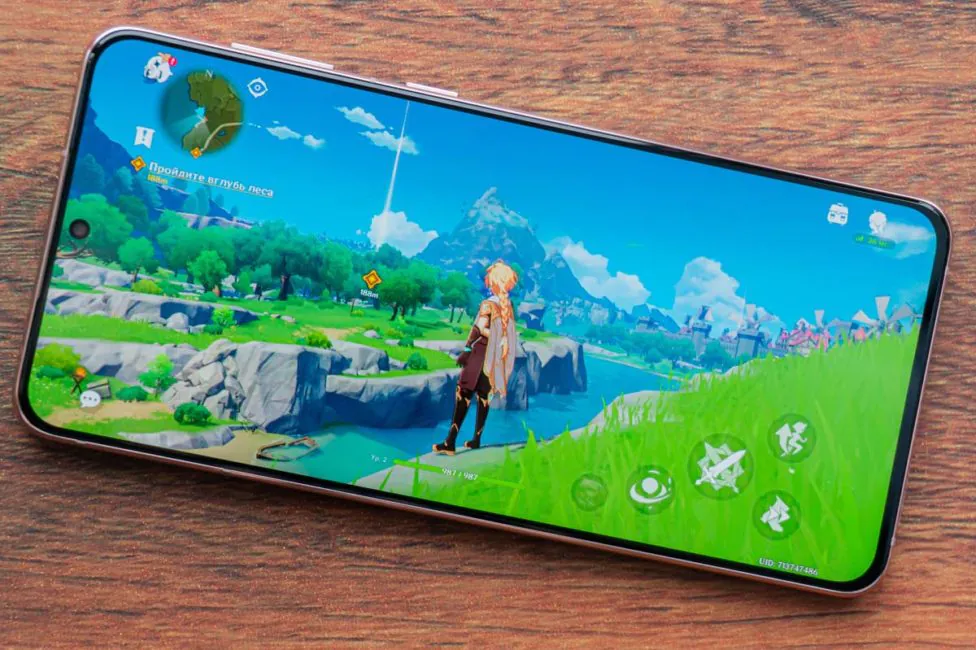
Samsung Galaxy S21+ cameras
Samsung Galaxy S21+ cameras are… interesting. There are now only three of them since they got rid of the TOF sensor that was in the S20+, but these are exactly the same modules from the last year.
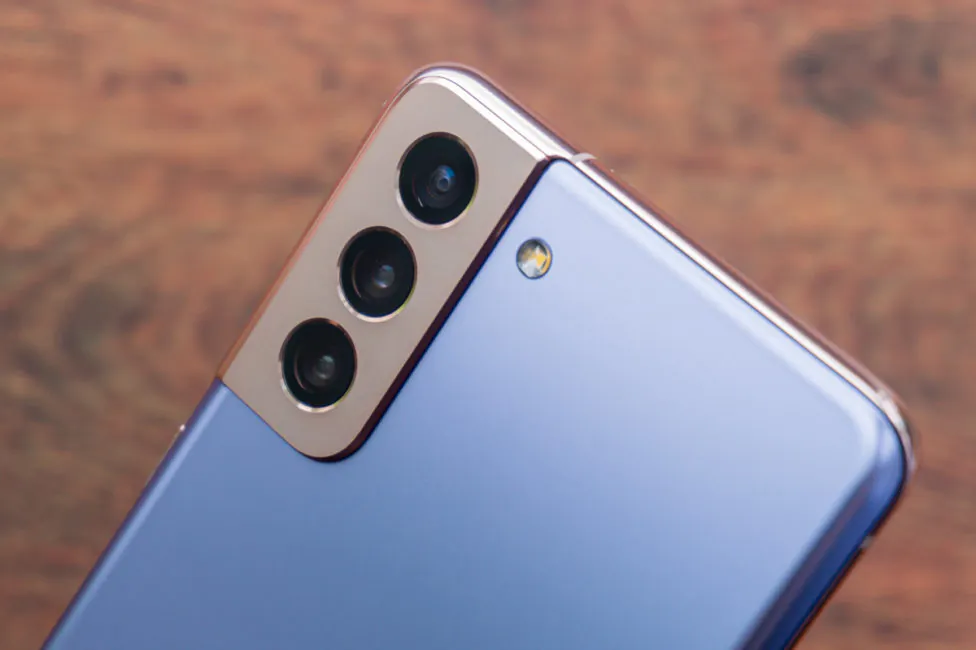
Still, this does not mean that the cameras are absolutely the same. Software plays a big role, but I still wanted something more interesting. For example, a full-fledged telephoto lens with real optical zoom. In fact, these are the sensors installed here:
- 12 MP, f/1.8, 26mm (wide), 1/1.76″, 1.8µm, Dual Pixel PDAF, OIS
- 64 MP, f/2.0, 29mm (telephoto), 1/1.72″, 0.8µm, PDAF, OIS, 1.1x optical zoom, 3x hybrid zoom
- 12 MP, f/2.2, 13mm, 120˚ (ultrawide), 1/2.55″ 1.4µm, Super Steady video
The main cameras shoot better than last year. During the day, they are good enough. The dynamic range is wide, the detail is high, the color reproduction is natural. In average lighting conditions noise appears in dark areas, but everything looks better than when aggressive noise reduction kicks in and blurs all the small details. Photos taken in night mode also look good.
PHOTOS IN FULL RESOLUTION WITH THE MAIN CAMERAS
There is no reason to praise the ultra-wide camera here. It might make more detailed photos now, but it still lacks autofocus. The angle is wide enough, but you can’t shoot small objects close up. But S21 Ultra does have autofocus, so it is capable of more. Normally, you shouldn’t use an ultra-wide angle at night, but if you really want to, use the night mode – it really helps out.
PHOTOS IN FULL RESILUTION WITH THE ULTRA-WIDE CAMERA
Telephoto still provides 3x hybrid zoom. The optical zoom is about 1.1x, although you can switch to this module even when you select 2x zoom in the camera app. On the one hand, photos with a 3x hybrid zoom are good, but only if the real 64 megapixel sensor is used, and not the crop from the main 12 megapixel sensor. On the other hand, it is all the same as the last year’s S20+. No real improvements. But the pictures themselves are better, no doubt about it.
PHOTO IN FULL RESOLUTION WITH 2X HYBRID ZOOM
By the way, you can use this pseudo-telephoto camera as the main one, simply by choosing the 64-megapixel resolution on the screen. The angle here is almost the same as in the main module, but with better details. Which isn’t the best for every scene. It’s mainly suitable for landscape scenes in excellent ambient light.
Video can be recorded in resolutions up to 8K at 24 fps, but, as before, it is not the best. There are not enough frames; 4K/60 FPS is the best option. It offers high-quality video with fast autofocus and effective stabilization. The ultra-wide camera also supports this resolution and frame rate.
The front-facing camera, judging by the specifications, is the same: 10 MP, f/2.2, 1 / 3.2″, 1.22 µm, Dual Pixel PDAF. This is still a very, very decent selfie camera, with autofocus and good detail and colors. But, of course, the details will be inferior to the S21 Ultra in 40 MP mode. It records videos in up to 4K/60 FPS, but in this case, autofocus will not work, you need to switch to 4K/30 FPS.
The list of modes in the camera application is the same: photo, video, multi-shot, AR effects, manual shooting mode, panoramas, food, night, portraits. Plus a few for video: portrait, professional, super slow and slow motion, hyperlapse and movie mode. The latter allows you to simultaneously record video on the front-facing camera and one of the main cameras, and you can switch between them during recording.
Unlocking
The fingerprint scanner in a smartphone is ultrasonic and is located in the screen – and it works perfectly. Unlocking occurs virtually instantly, and the sensor area itself is not too low and not too high. You quickly remember its position and after a couple of days you can do without even a hint in the form of an icon.
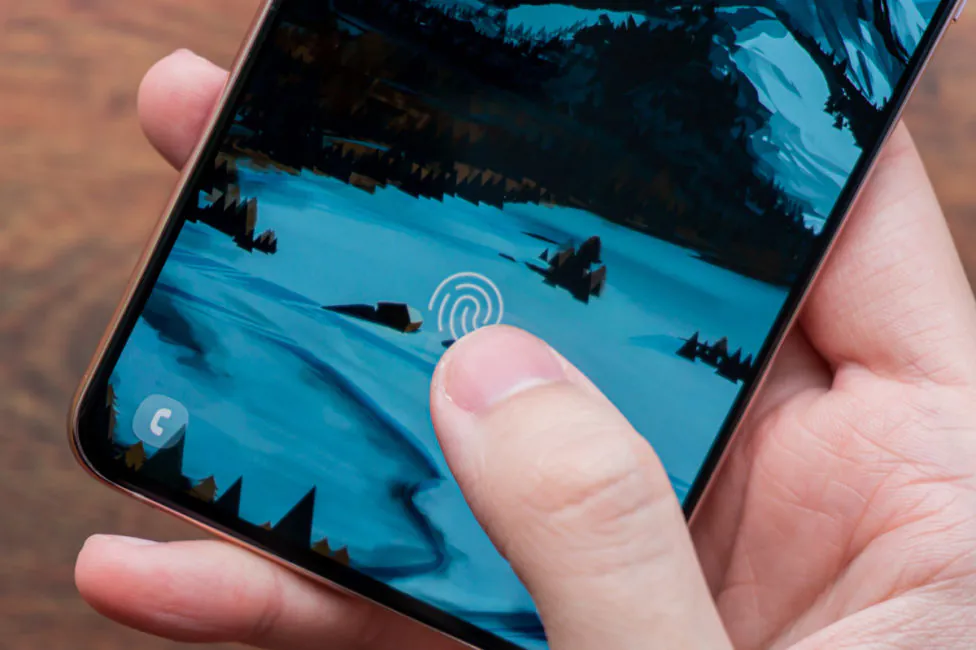
This is one of the most stable and fast in-screen scanners that I tested. In terms of settings, everything is the same: the scanner can always be active, even when the screen is off, plus you can enable the hint icon on the Always On Display, as well as disable the unlock animation.
Face unlocking works well, but it’s little slower than the fingerprint scanner. To successfully unlock, you need at least some light around. The worse are the conditions, the longer the recognition process itself will last. But the problem can be solved and in the settings you can enable the option to temporarily increase the brightness of the screen. With it, you will be able to access your smartphone in complete darkness, but your eyes probably won’t thank you for that.
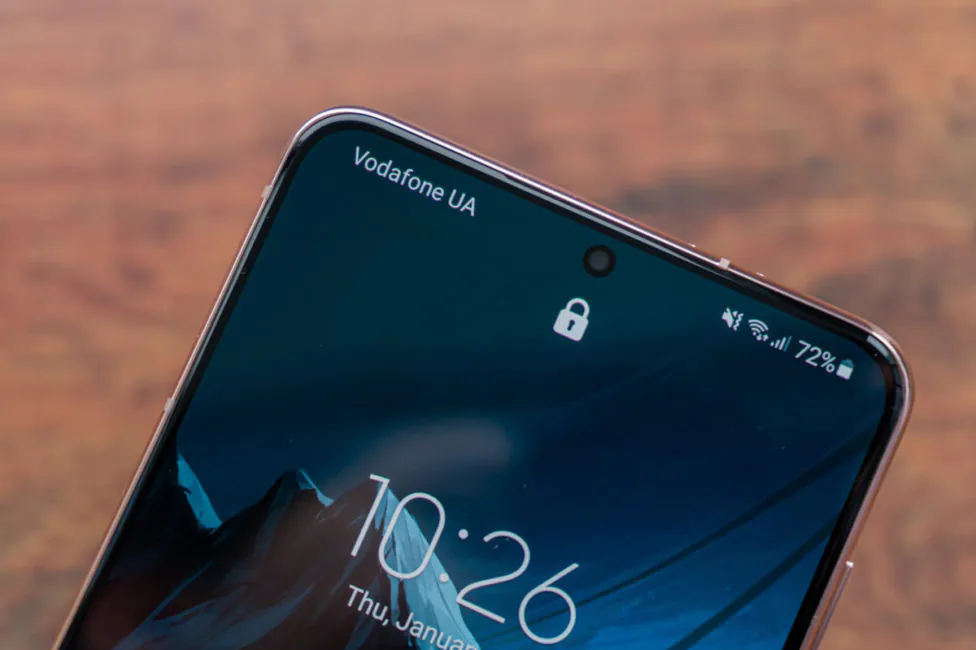
In addition, you can enter an alternative view in the settings, enable the display of the lock screen after successful recognition, activate accelerated recognition and prohibit unlocking with closed eyes for additional security.
Samsung Galaxy S21+ battery life
Samsung Galaxy S21+ has a 4800 mAh battery, which, of course, is slightly inferior to the Ultra’s battery, but it’s better than last year’s Galaxy S20+. The latter didn’t impress me, but this time I was very happy.

Even if the the smartphone does not set any records, it offers stable 6-7 hours of active screen at 120 Hz with the Always On Display enabled on schedule from 8:00 to 20:00. It is enough for a day of active use. The PCMark Work 2.0 benchmark battery test for some reason did not show the result at the end, but the system usage statistics show 6 hours and 8 minutes. We’re talking maximum screen brightness with at 120Hz.
The device supports fast wired charging (25 W), fast wireless (15 W) charging and reversible charging (4.5 W), designed for Wireless PowerShare function and charging other devices, be it a headset, smartwatch or even a smartphone.
Sound and communication
The sound of the Samsung Galaxy S21+ does not differ in any way from the sound of the S21 Ultra’s speakers, so I won’t cover much here. The earpiece speaker does an excellent job and plays along well with the main one, forming high-quality stereo. The sound is loud and clear, without distortion even at maximum volume. Good speakers overall, but not the best on the market.
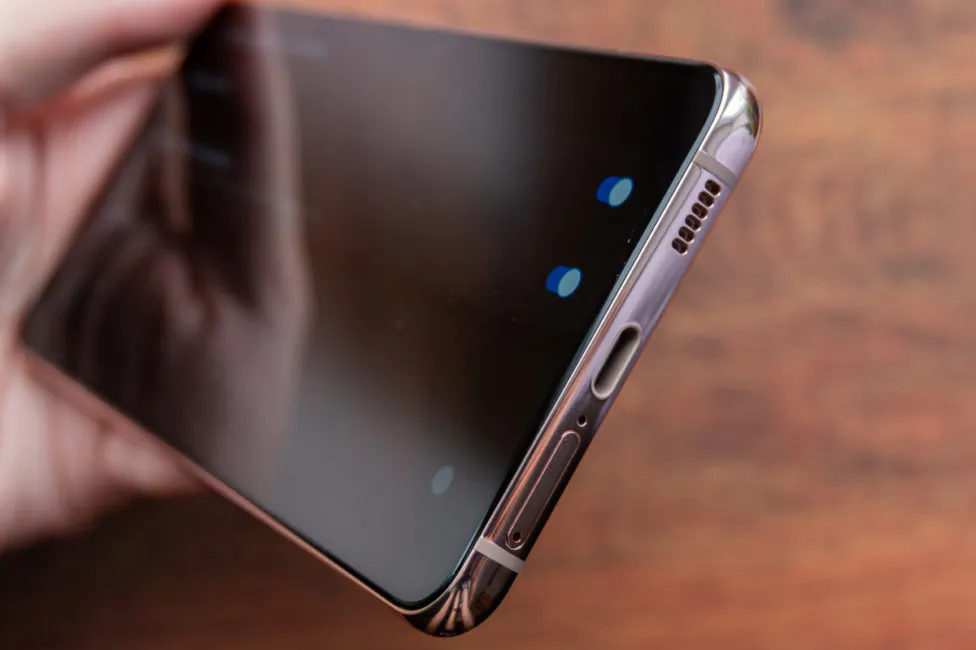
The sound in headphones is also fine. The smartphone is equally good at revealing both wired and various wireless headsets. All is good with either quality or the maximum volume level. In the settings, everything is exactly the same: there is Dolby Atmos with four presets, Dolby Atmos for games and a nine-band equalizer with five ready-made and one customizable profiles. There is Adapt Sound technology and UHQ upscaler effect, but if all of the above work with speakers and wireless headsets, then UHQ upscaler only works with wired ones.
Vibration feedback is as good as before. Its intensity can be adjusted. Among other things, you can also change the vibration pattern.
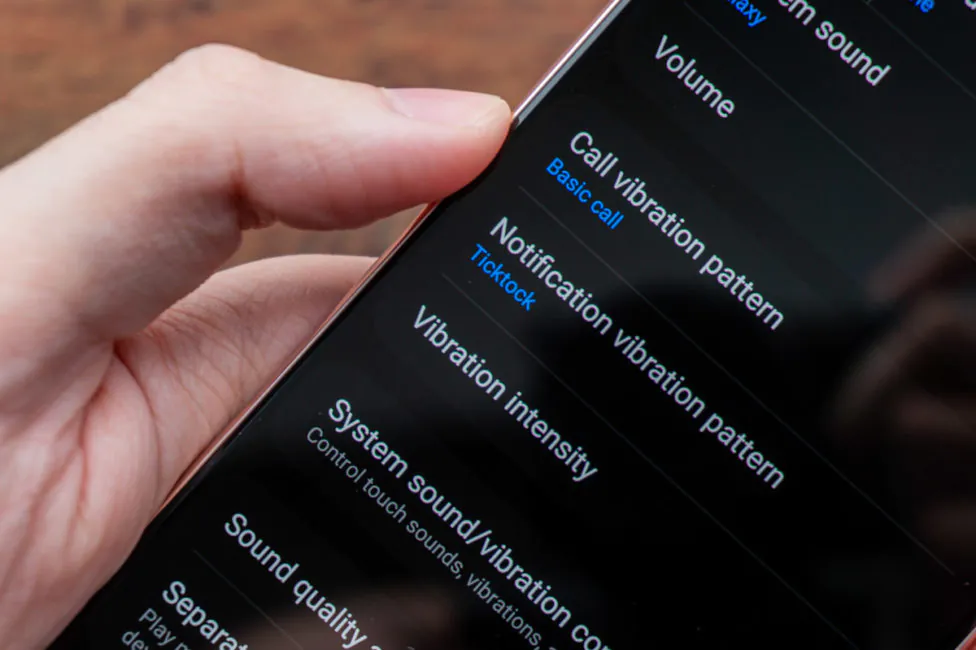
In terms of wireless modules, the smartphone is somewhat lacking compared to the senior version, but now there’s a 5G version. The Galaxy S21+ supports Wi-Fi 6 (not 6E) and Bluetooth 5.0 (A2DP, LE), but not 5.2. Otherwise, everything is similar to the Ultra: there is GPS (A-GPS, GLONASS, BDS, GALILEO) and NFC. All modules are working as expected.
Firmware and software
The Samsung Galaxy S21+ works on Android 11 with the proprietary One UI 3.1 shell. I already talked about its changes in more detail in the review of the Samsung Galaxy S21 Ultra, and here we have exactly the same thing, if you do not take into account the lack of the S Pen contextual actions. And everything is the same, with many different gestures and additional functions, including recording conversations.
Verdict
The Samsung Galaxy S21+ is a worthy successor to the Galaxy S20+. This is a smartphone that you can’t confuse with any other. On the one hand, the screen has become more interesting: the adaptive frequency has a positive effect on the operating time, and the maximum brightness level is higher. At the same time, it now lacks WQHD+, which is a small downgrade. The new hardware is noticeably better – and so is the battery life. Only you have to buy a charger separately now.
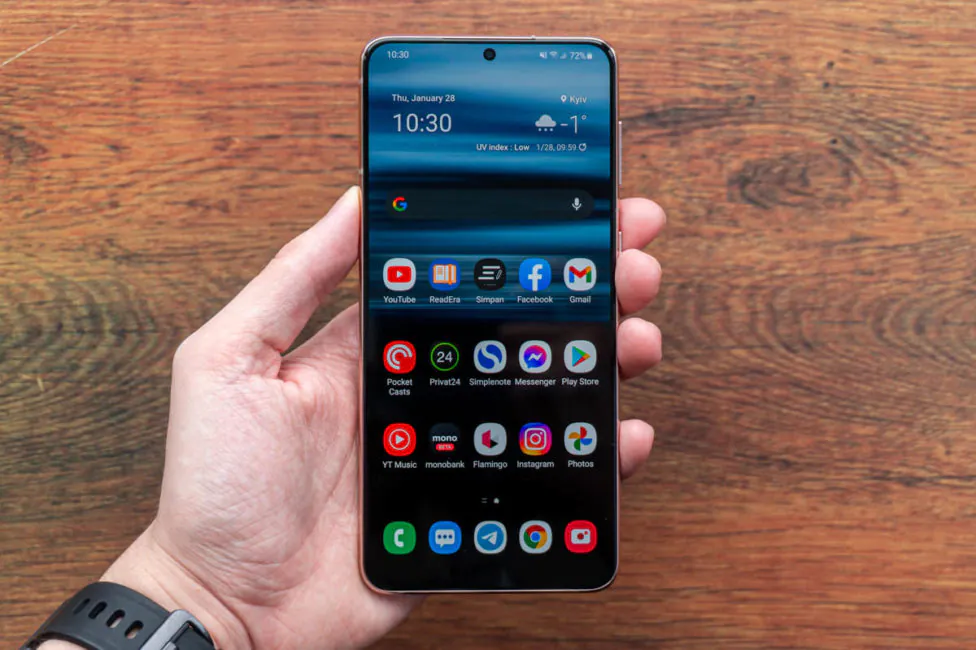
But why the cameras haven’t been improved, safe for the software, is a big question. They’ve gotten a little better, no doubt about that, but is it a tangible upgrade? I wouldn’t say that. Samsung could have done so much: add ultra-wide autofocus, give more resolution to the main sensor, put a telephoto module with a real optical zoom…
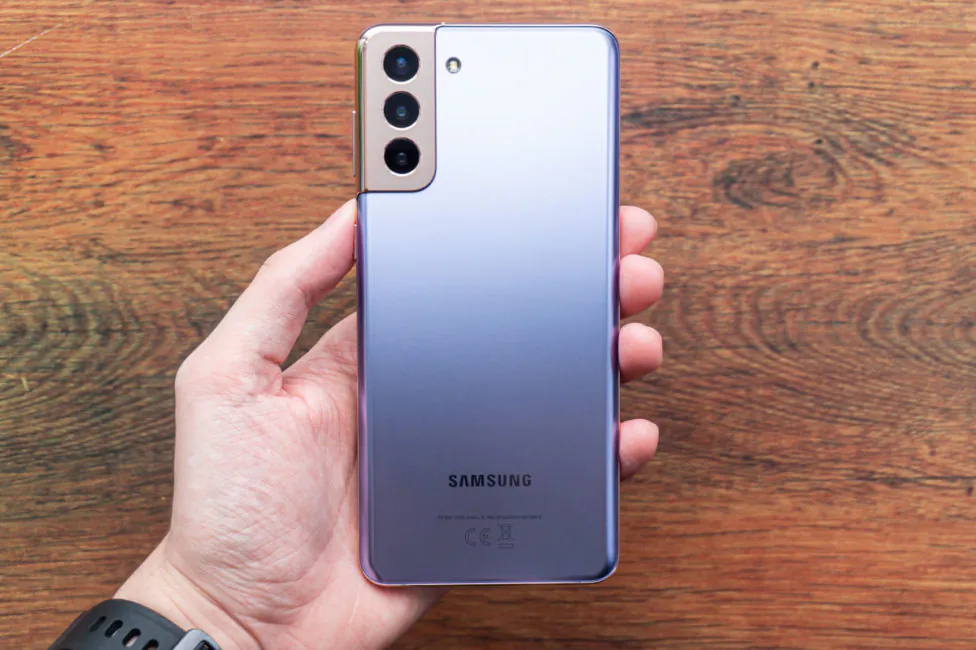
However, Samsung did a good job correcting previous errors, but it is clear that the main emphasis was placed on the top-end Samsung Galaxy S21 Ultra, which is why the “lower-end” flagships seem less interesting in comparison.

Subscribe to our accounts:




